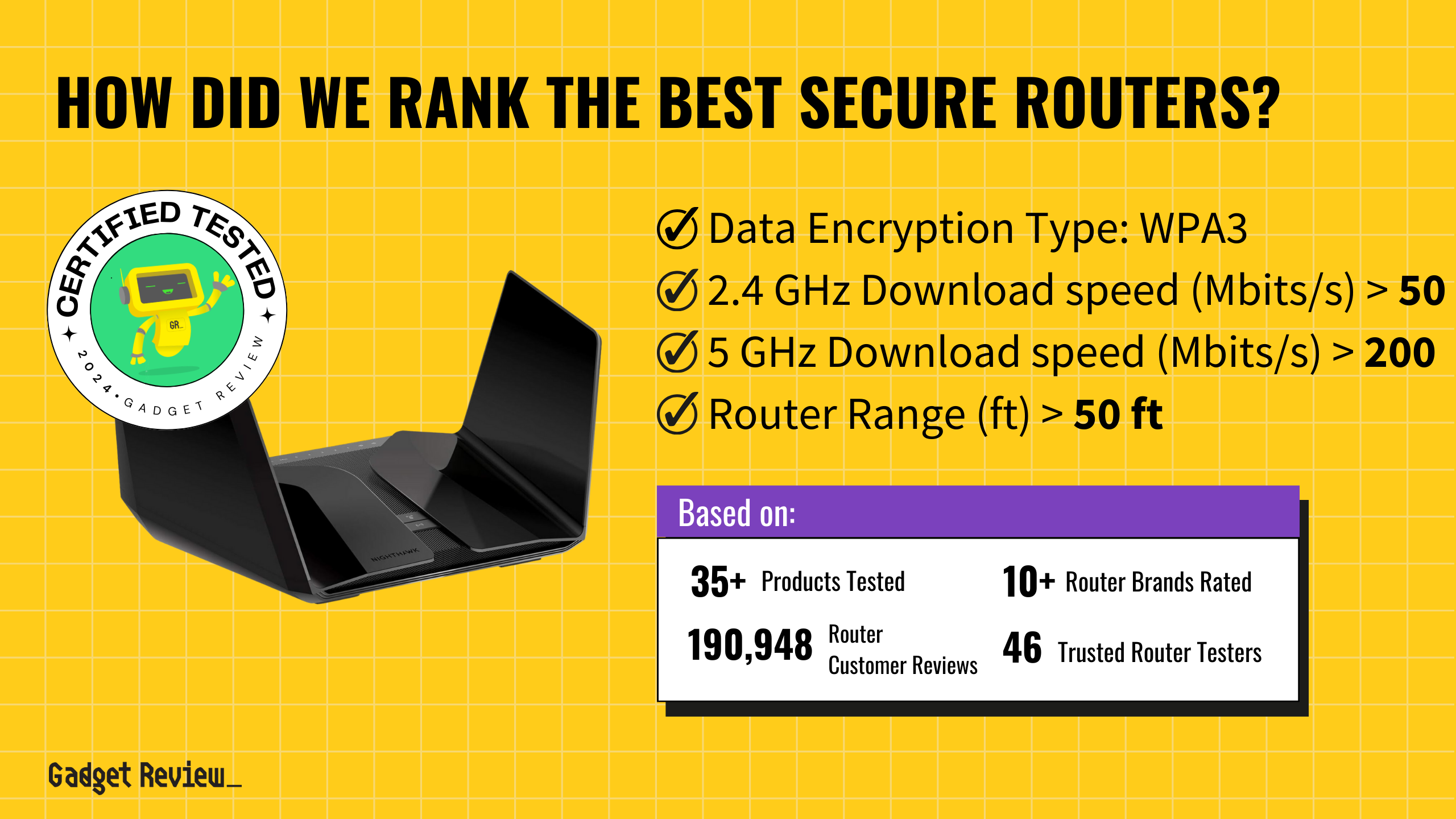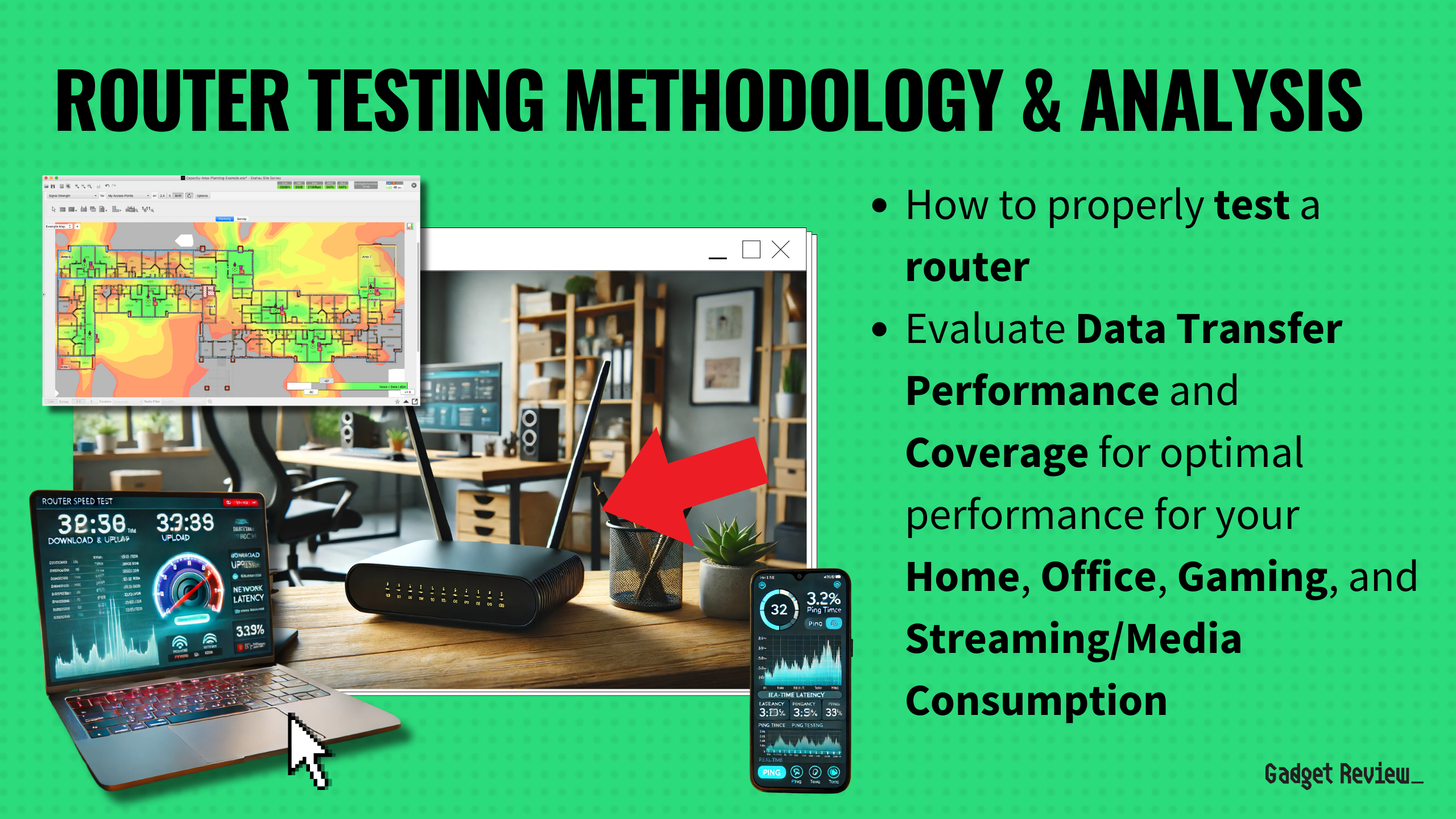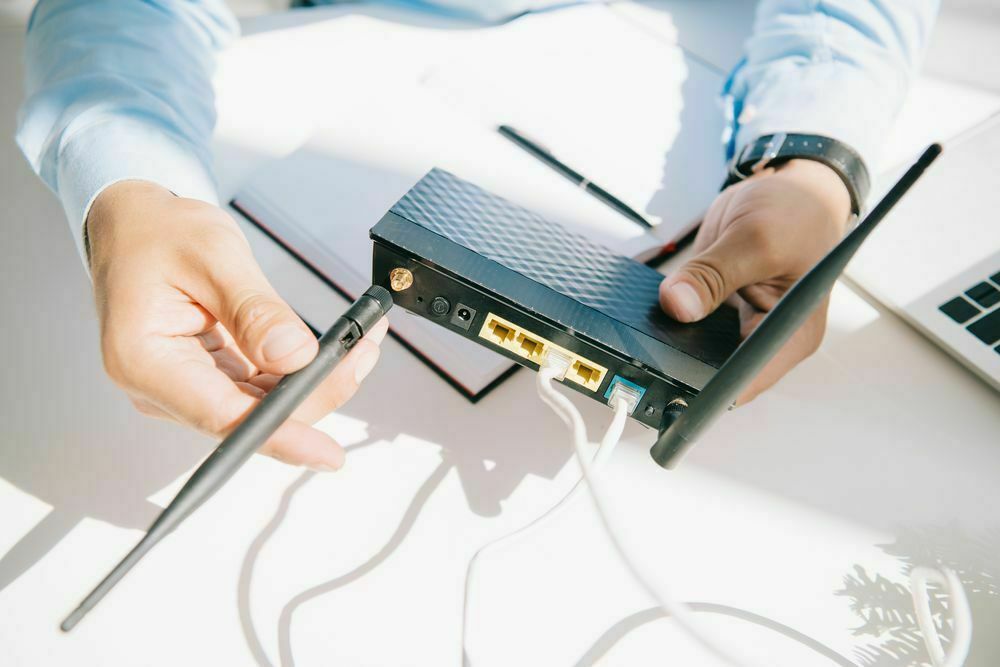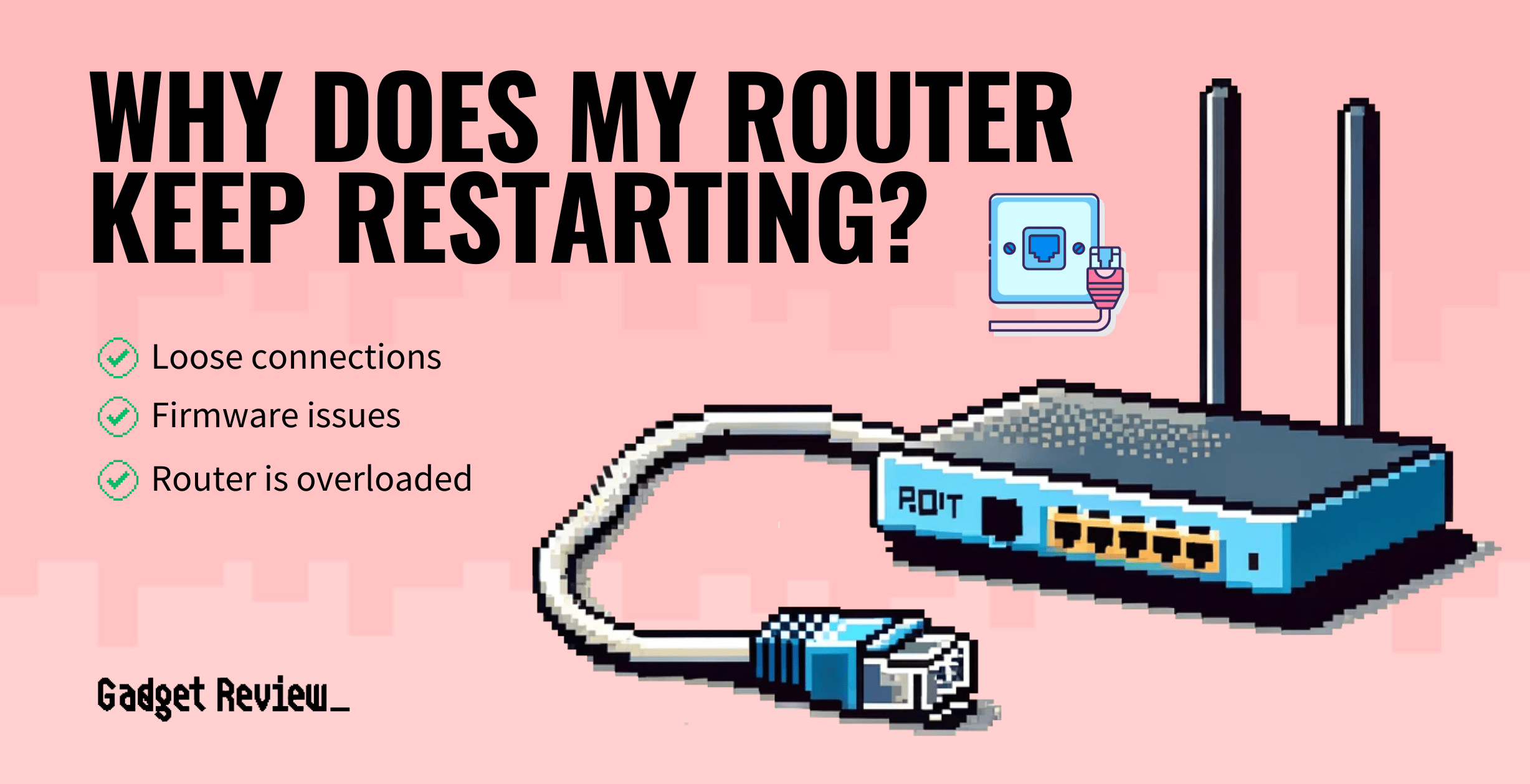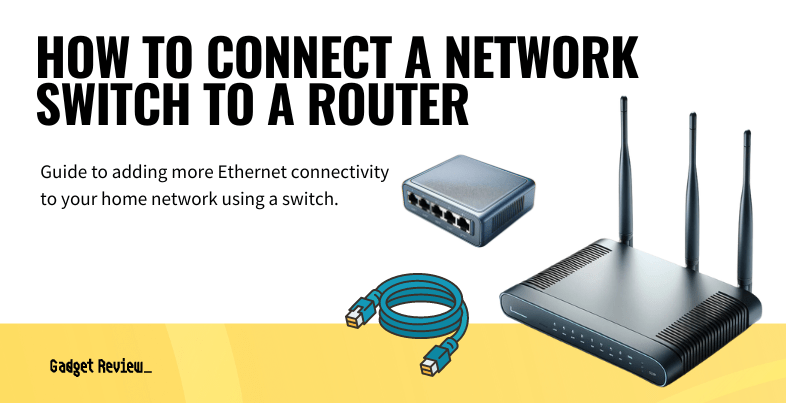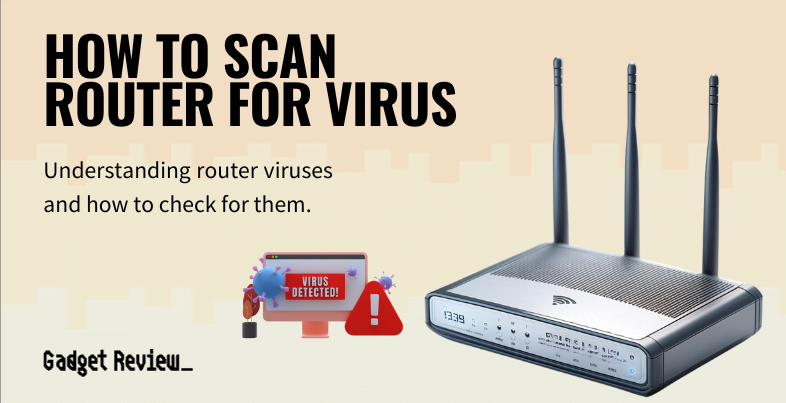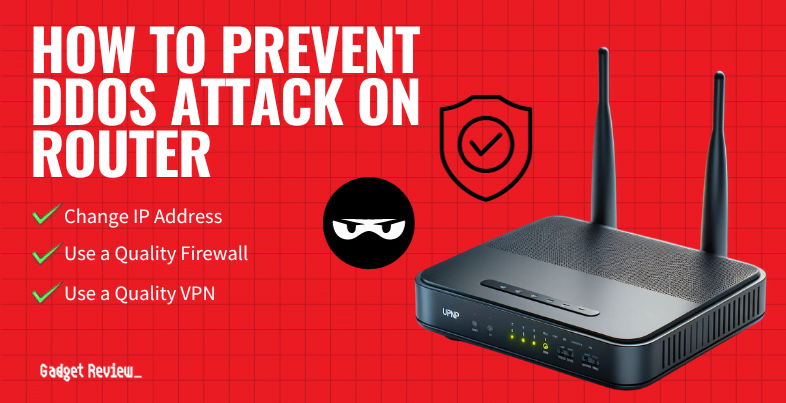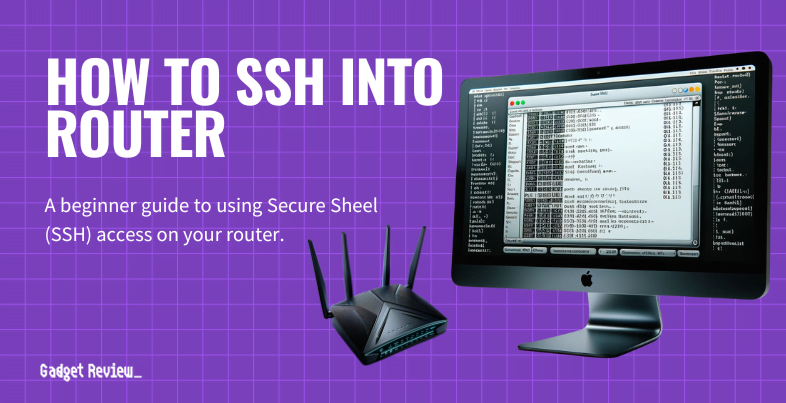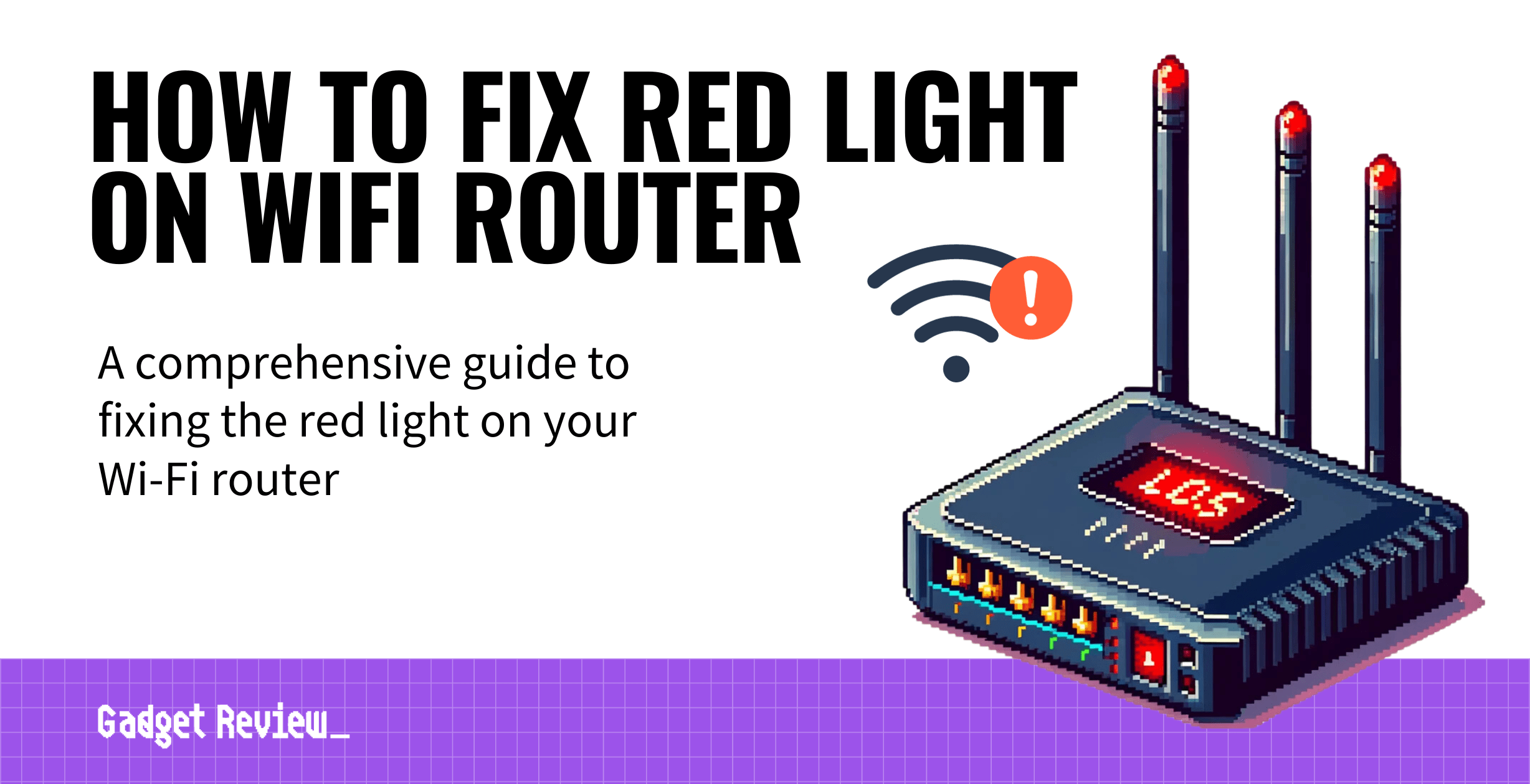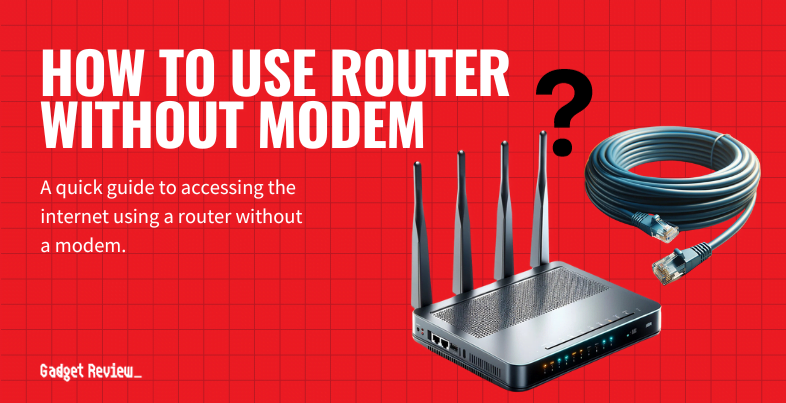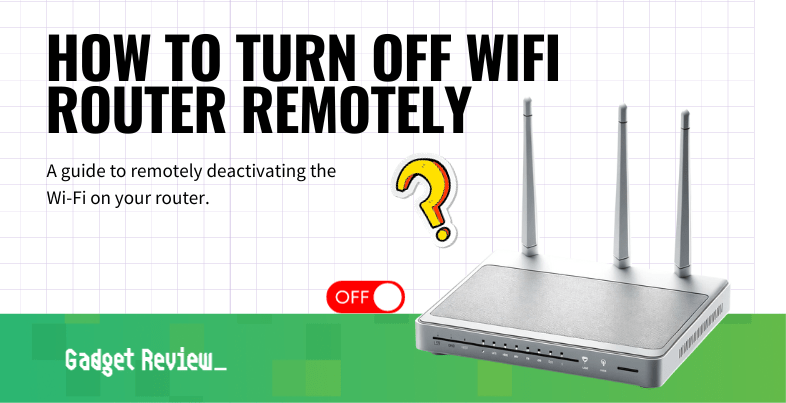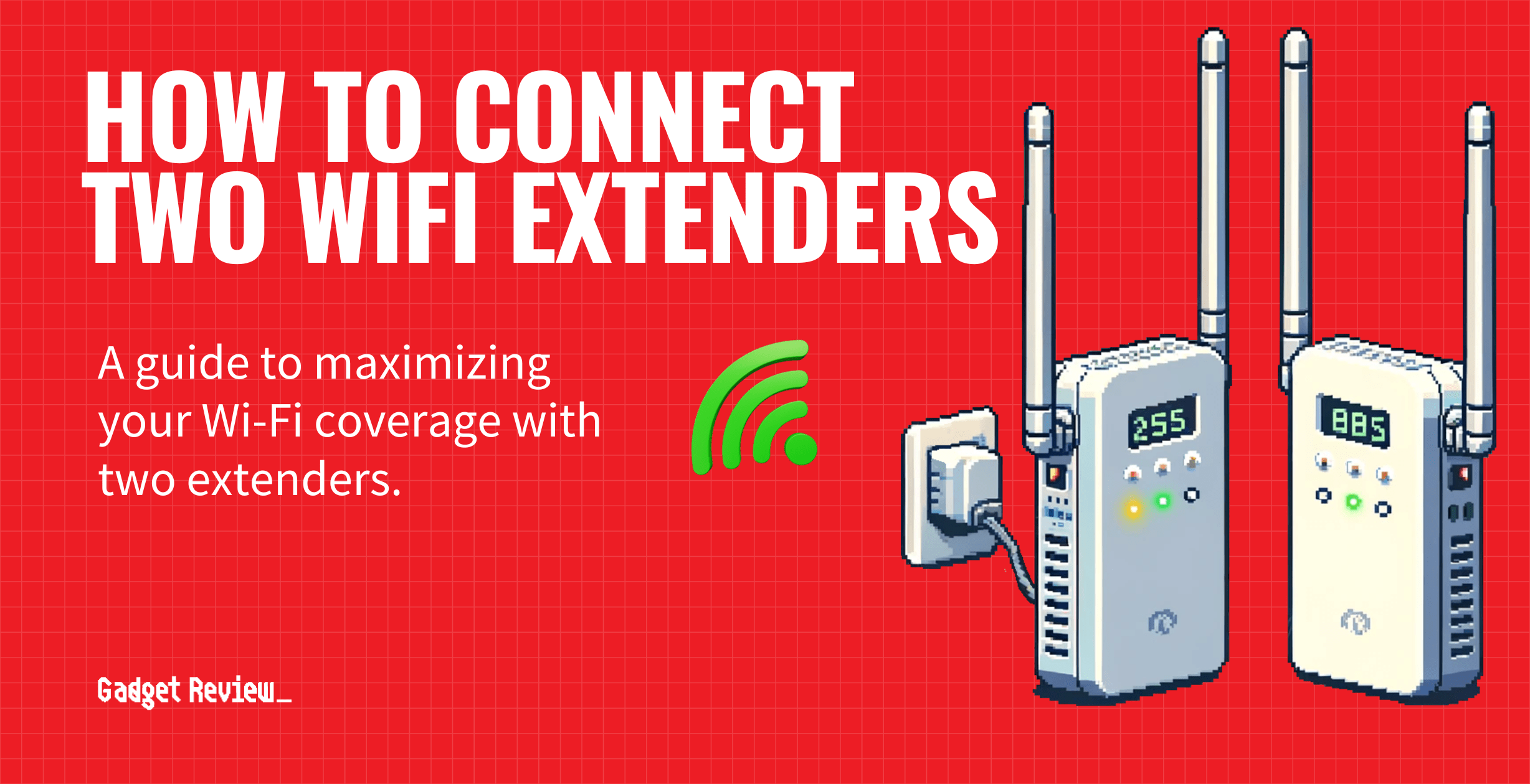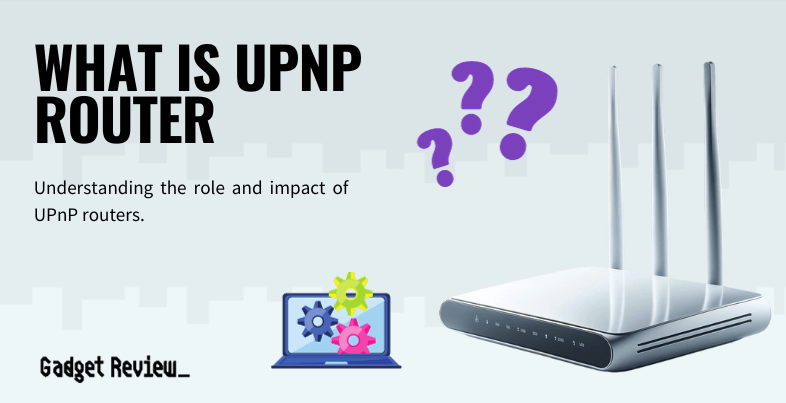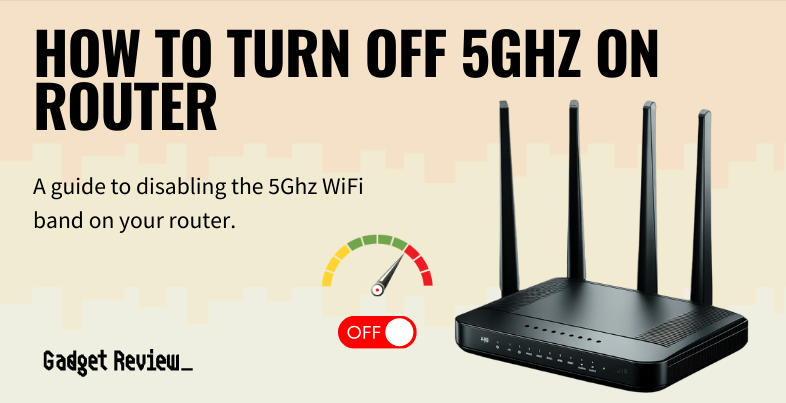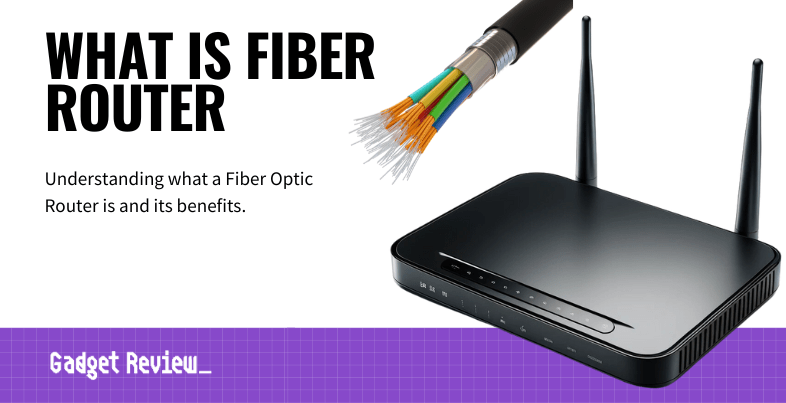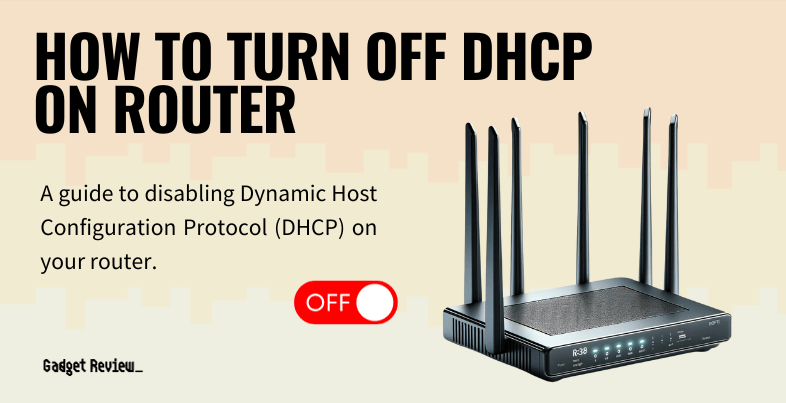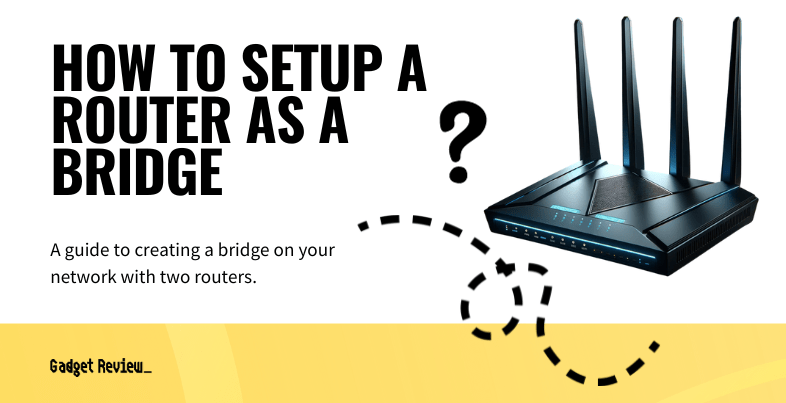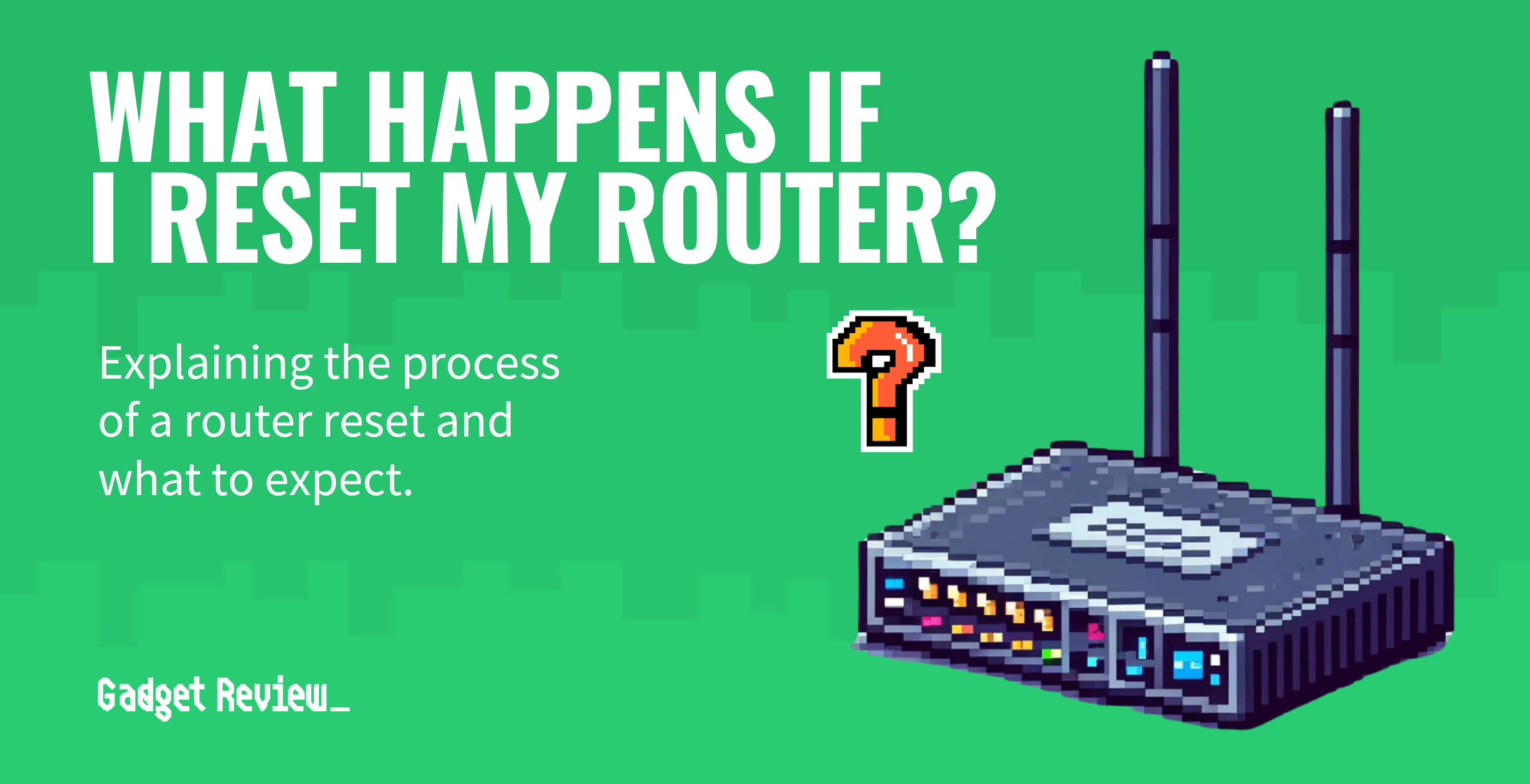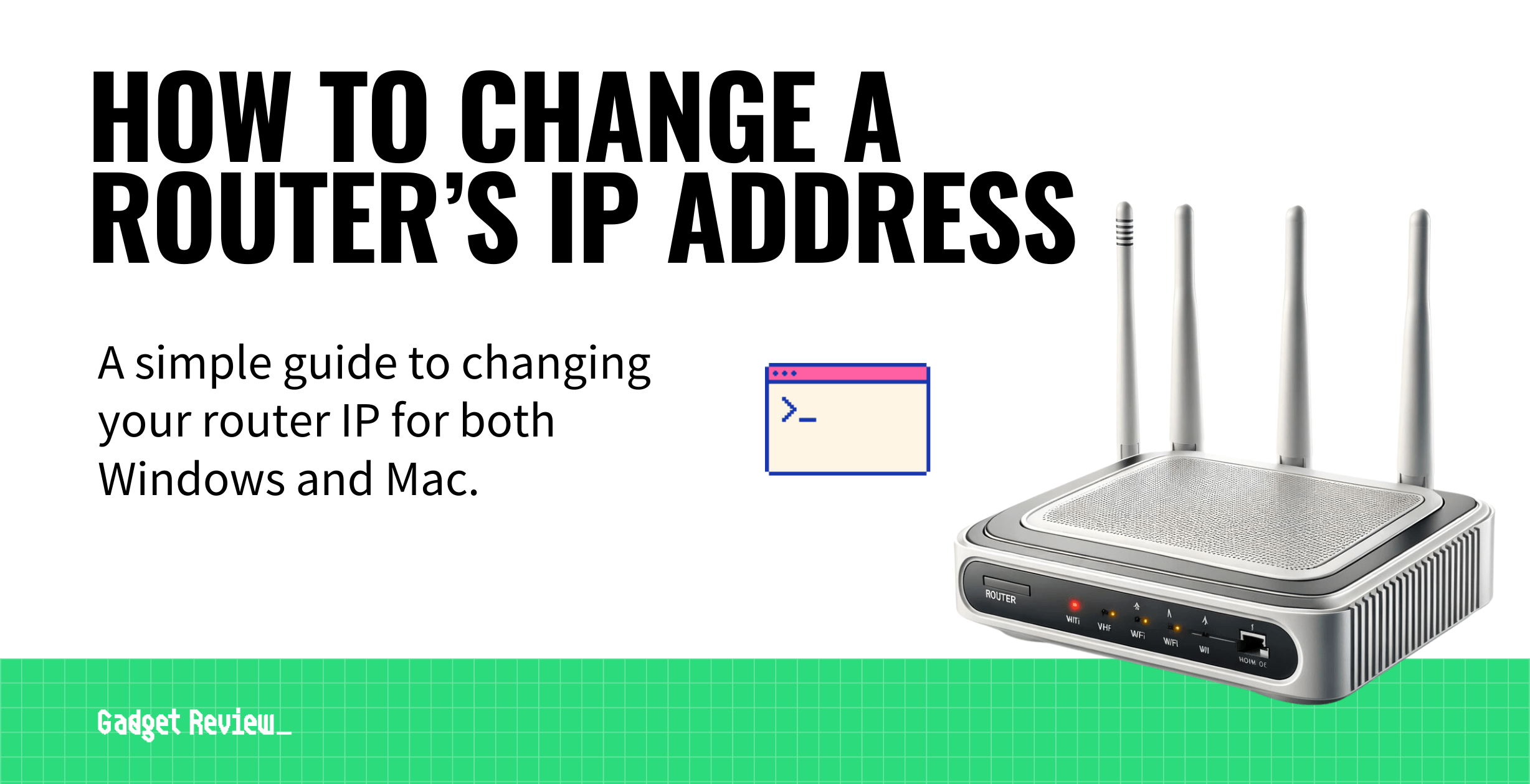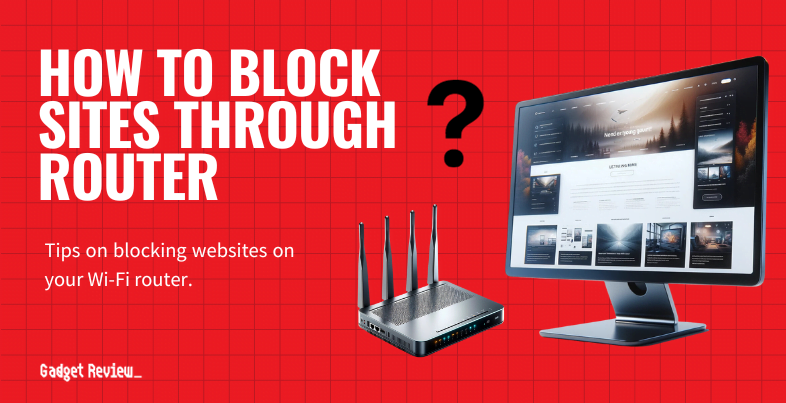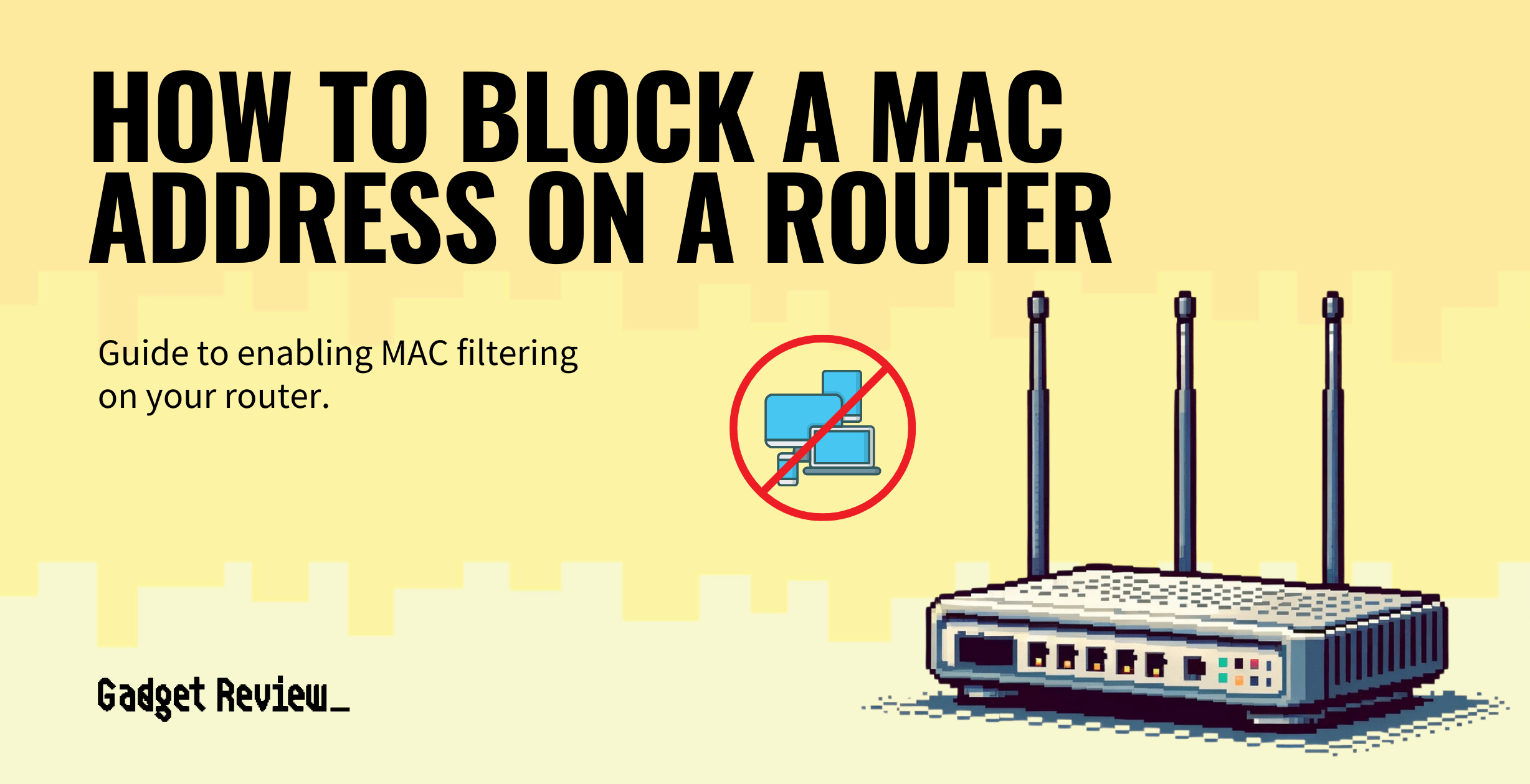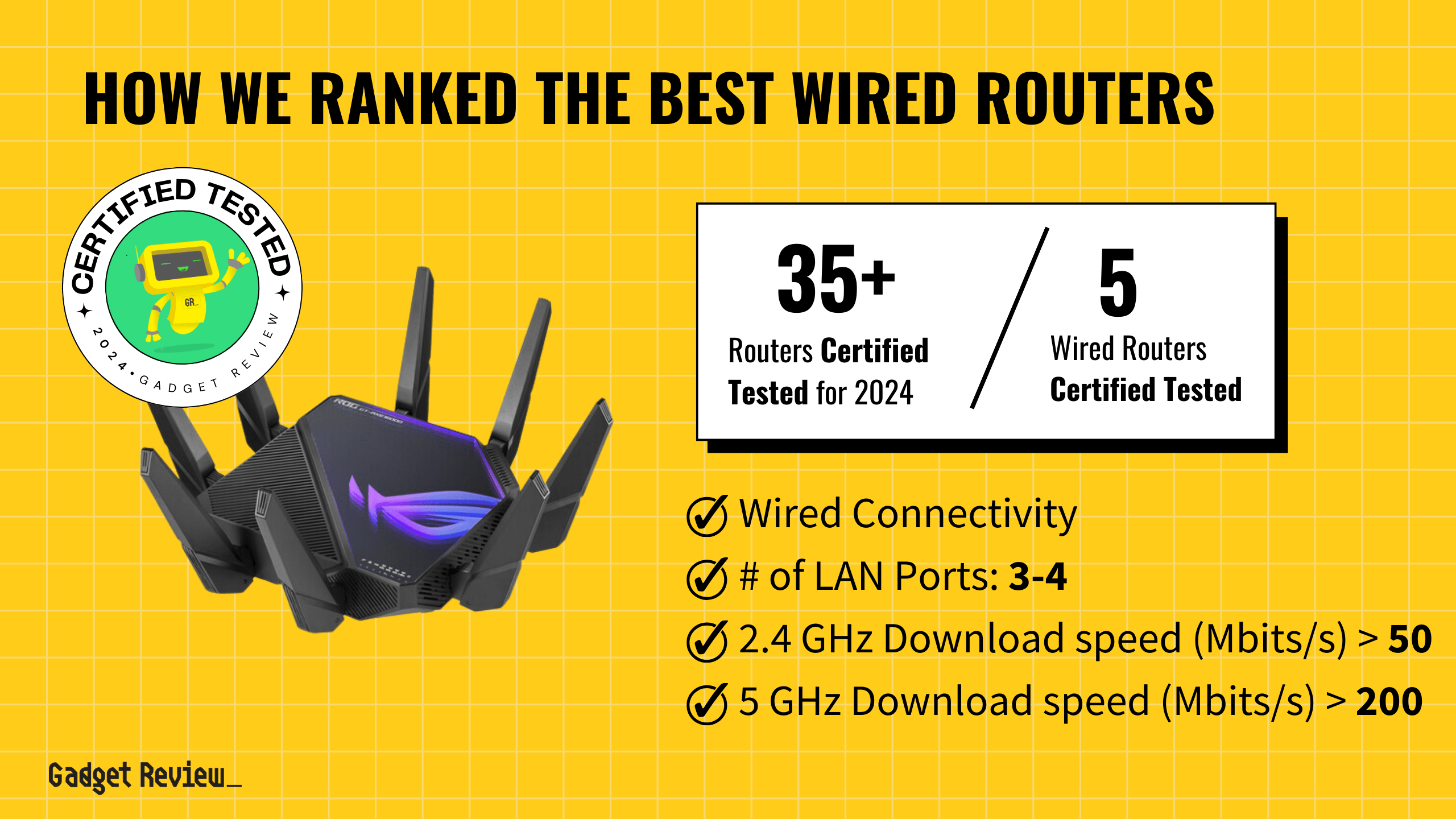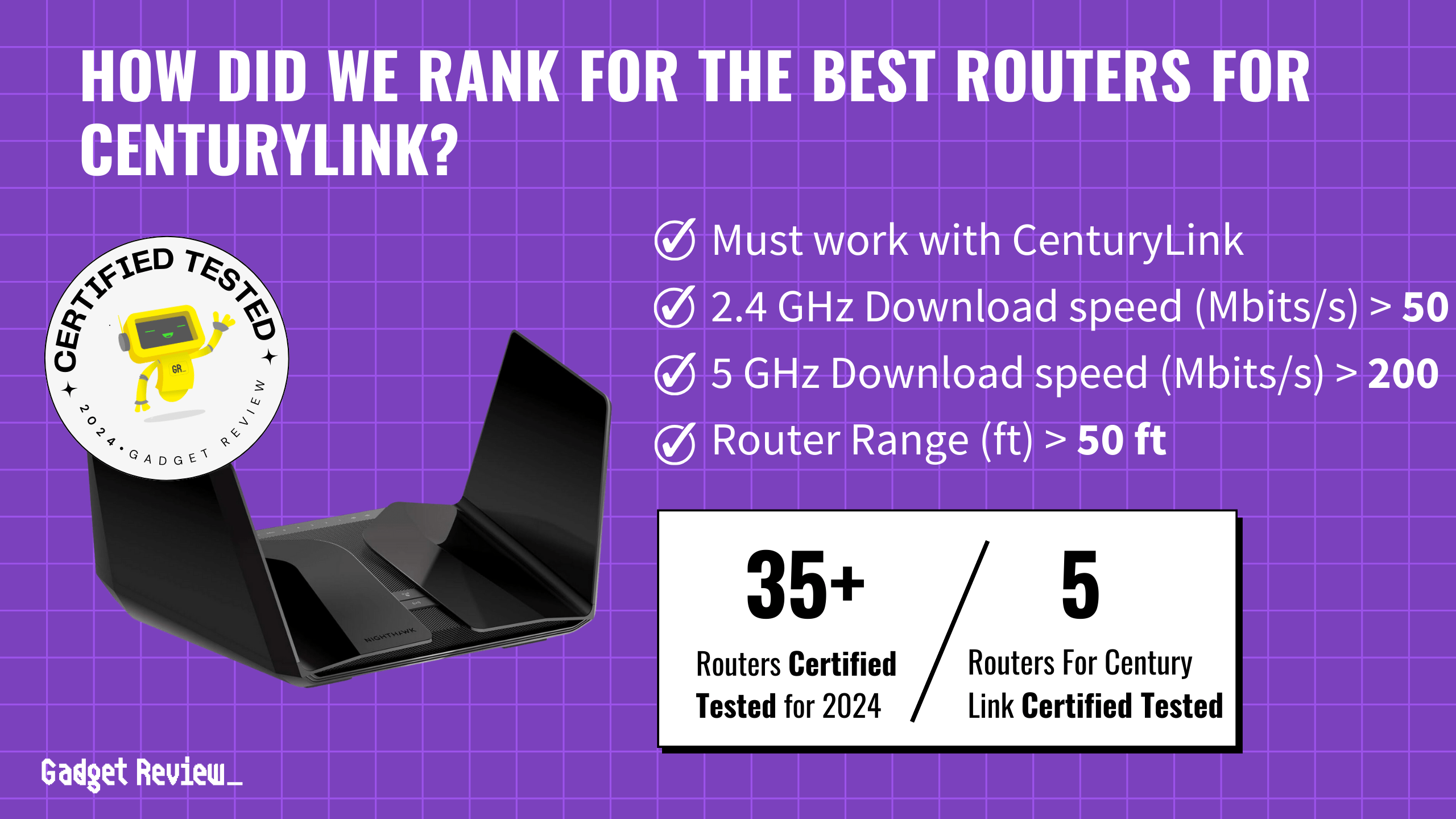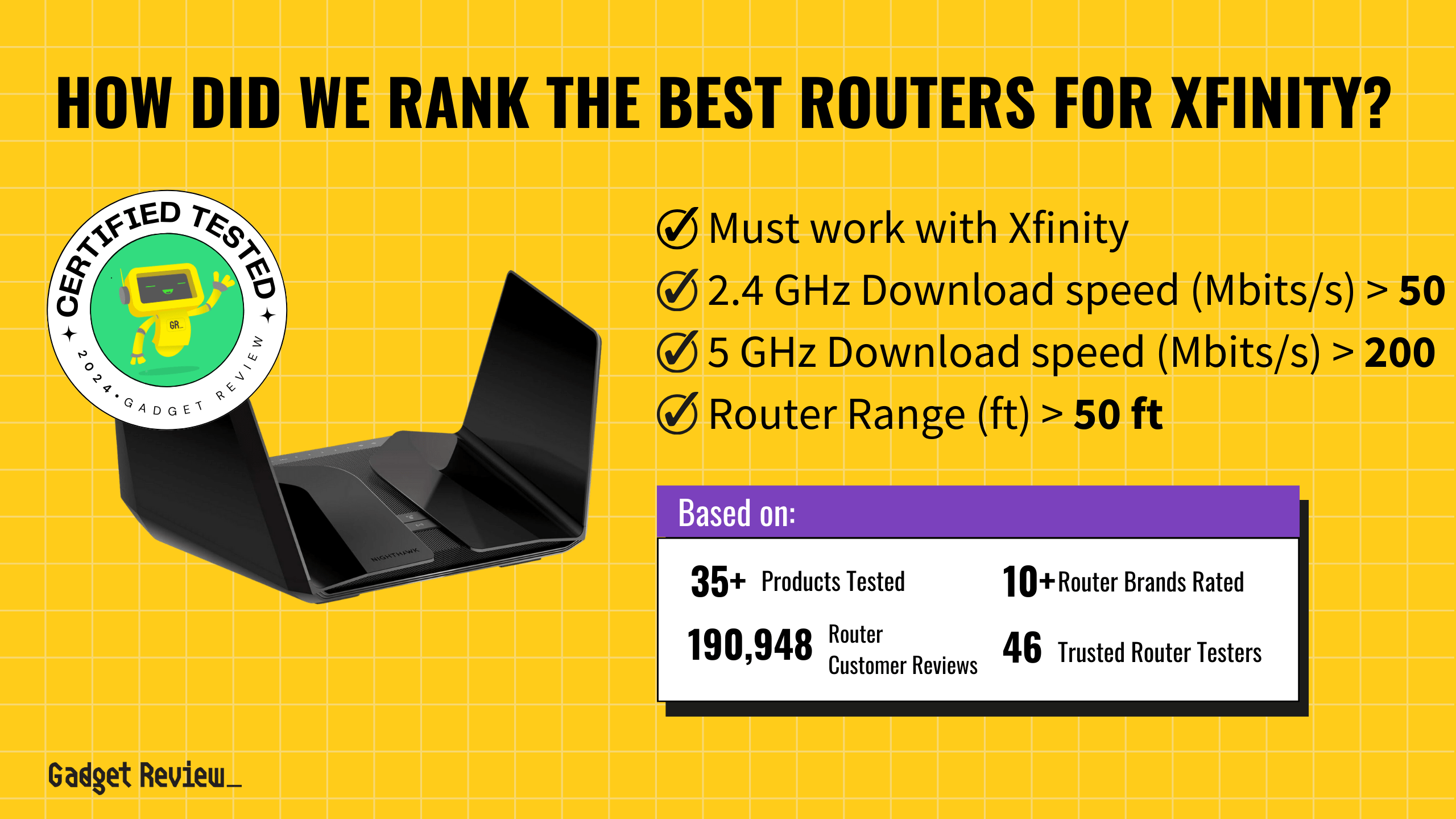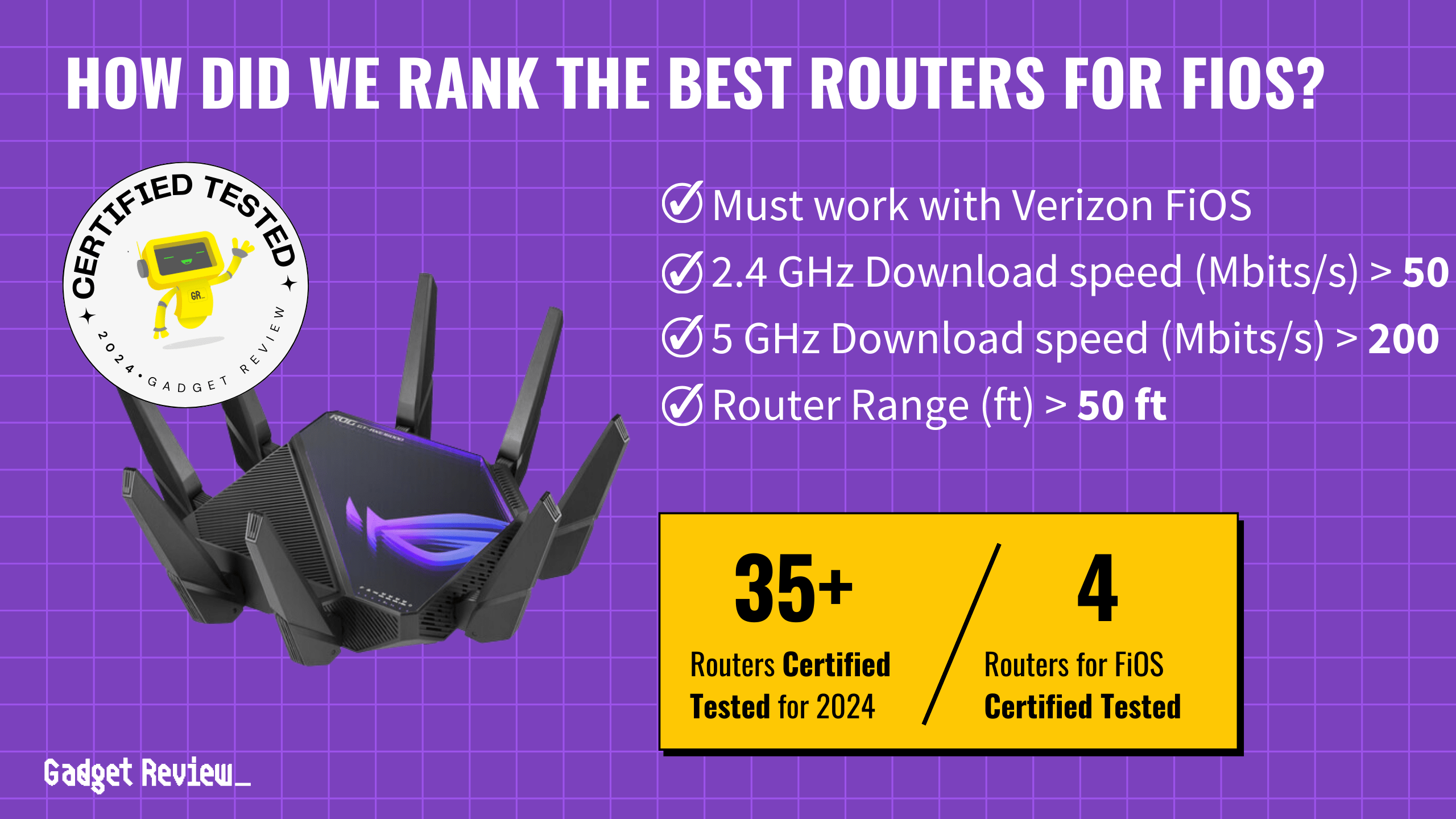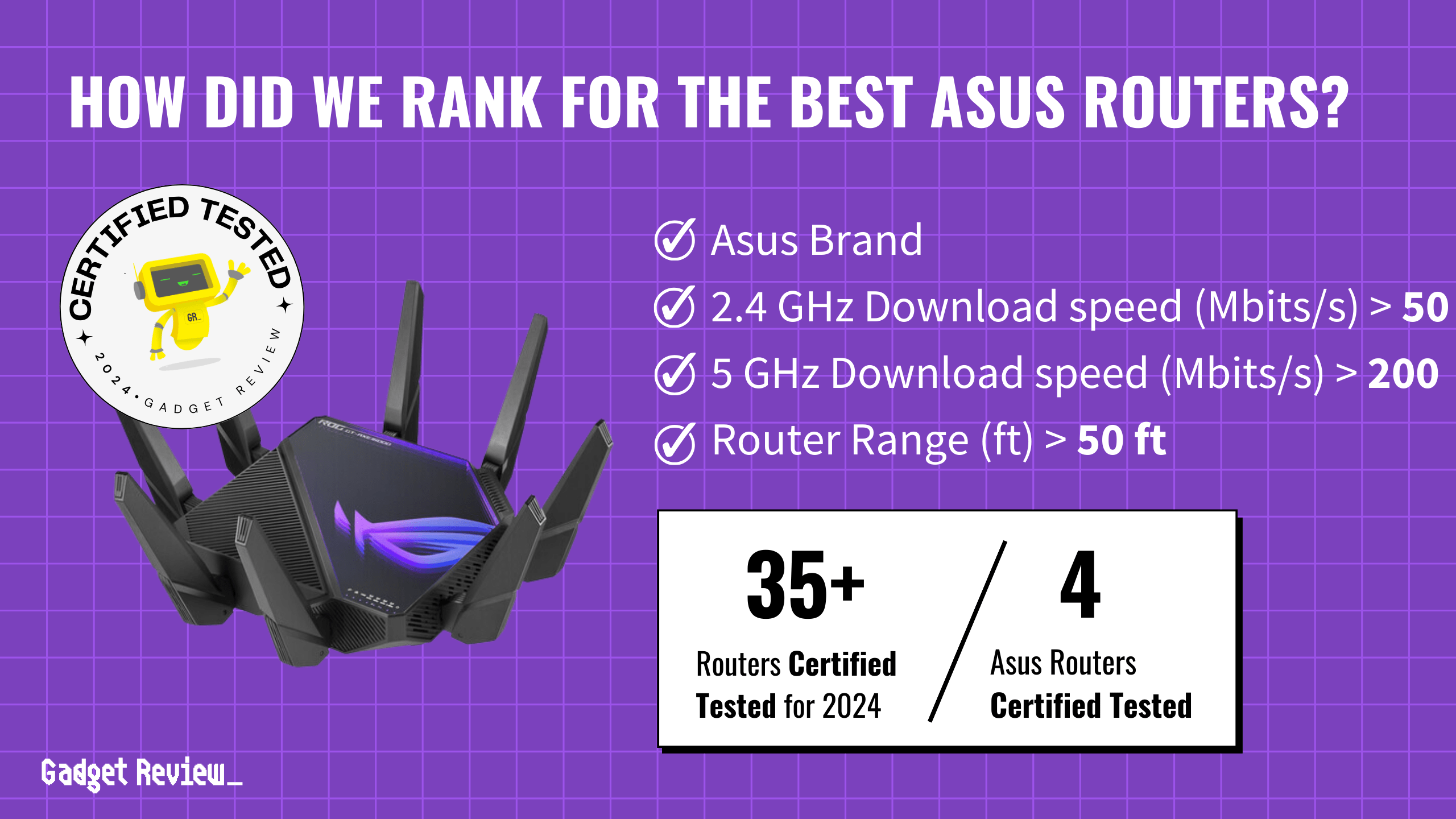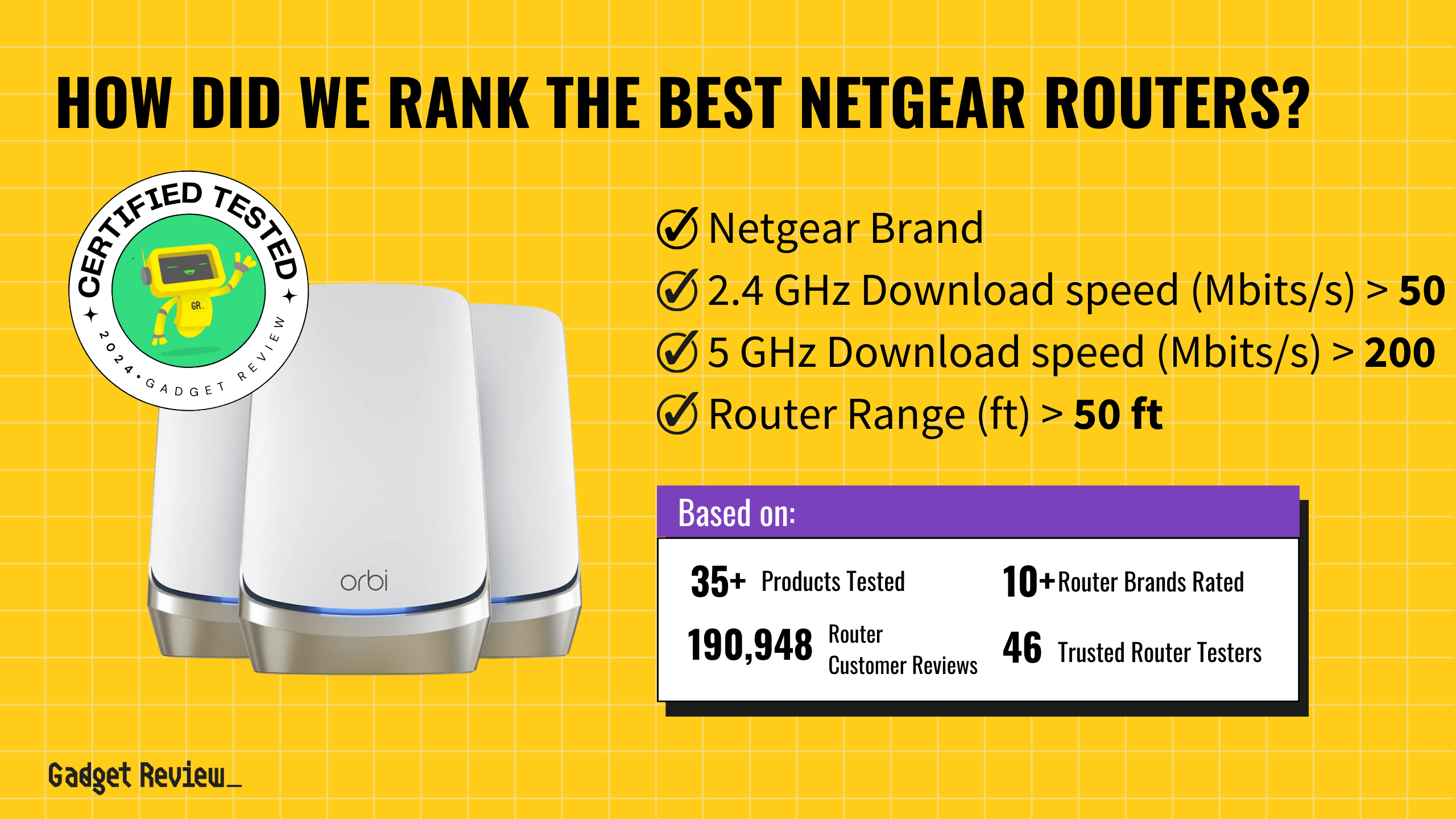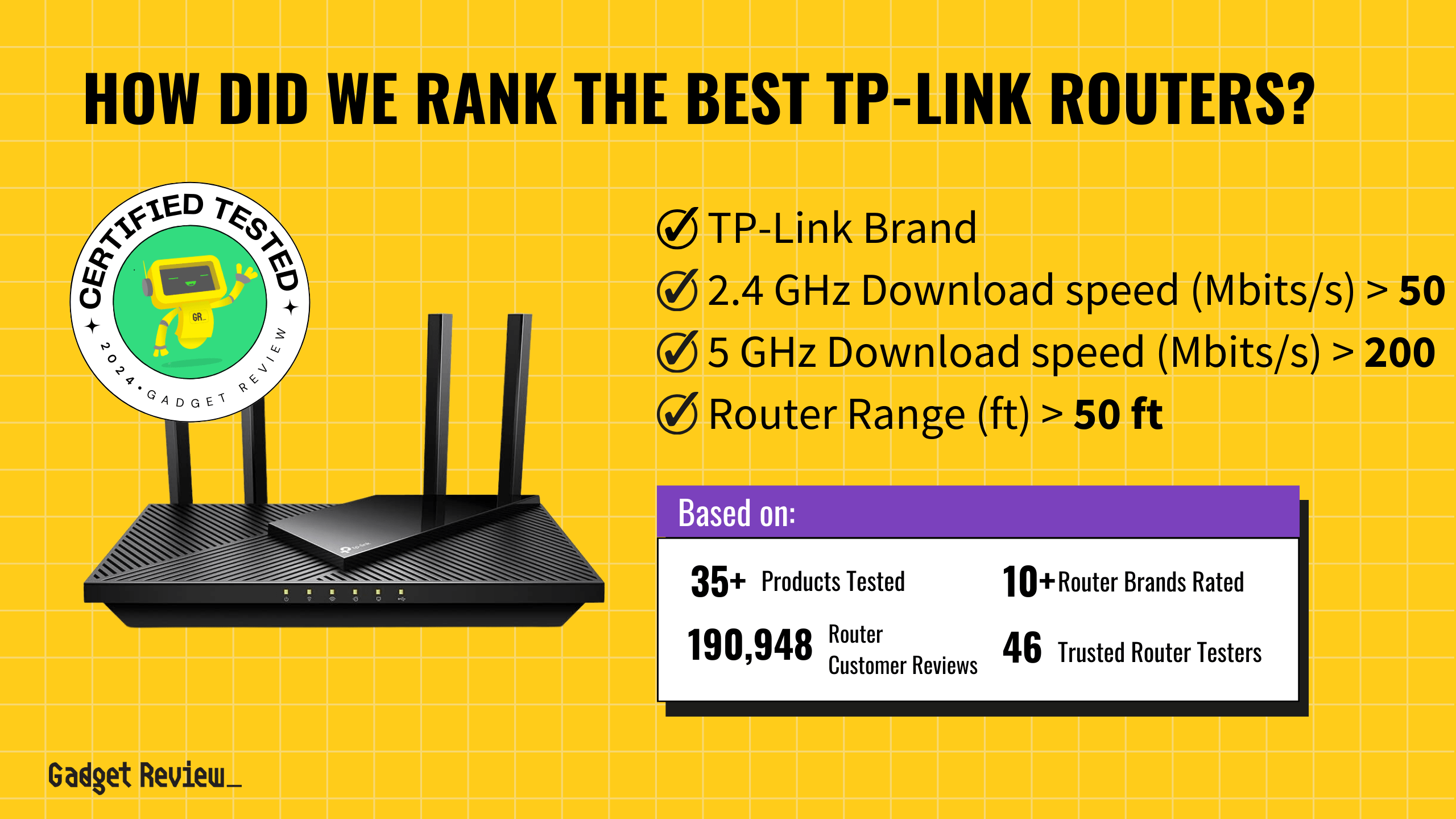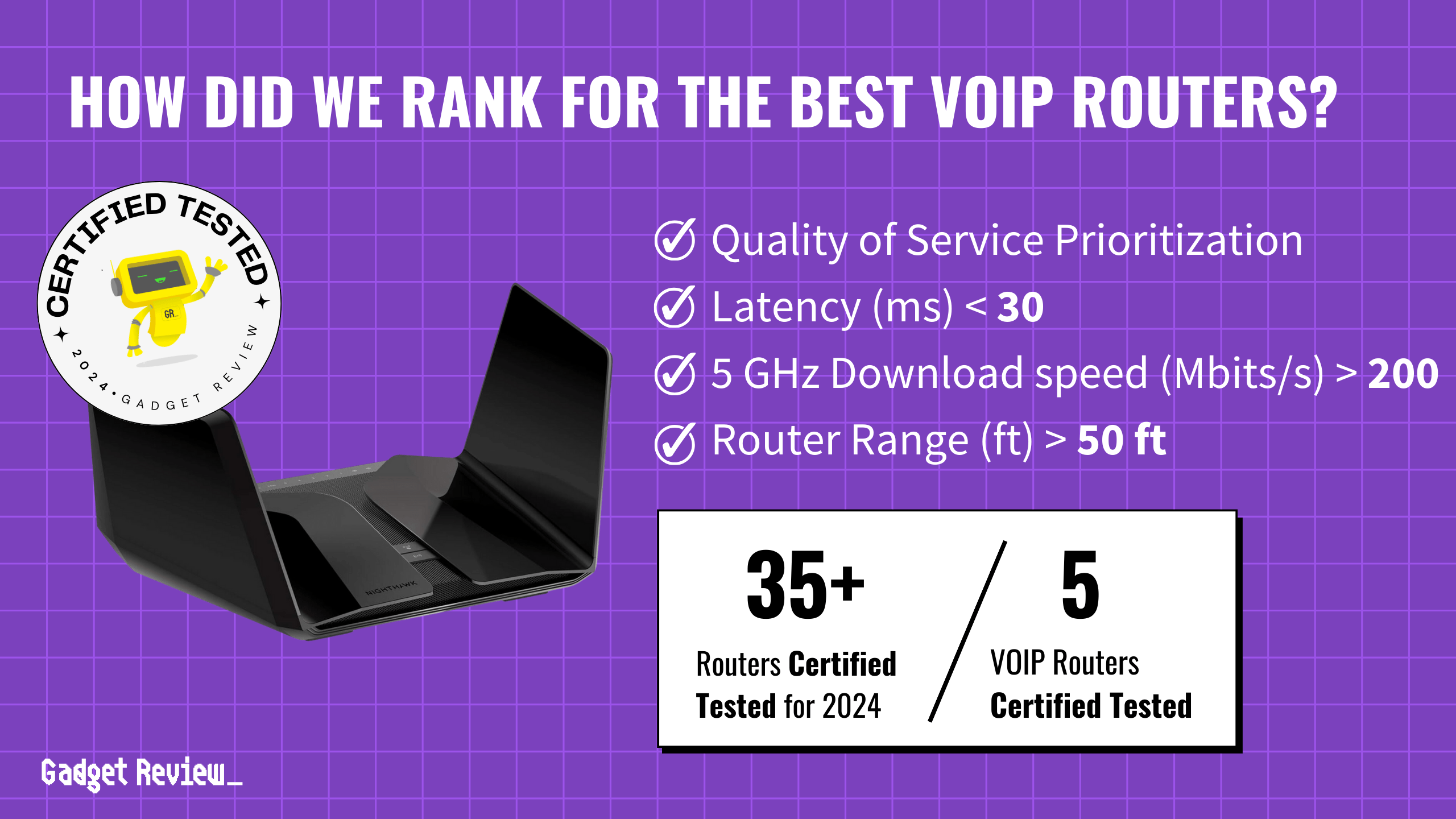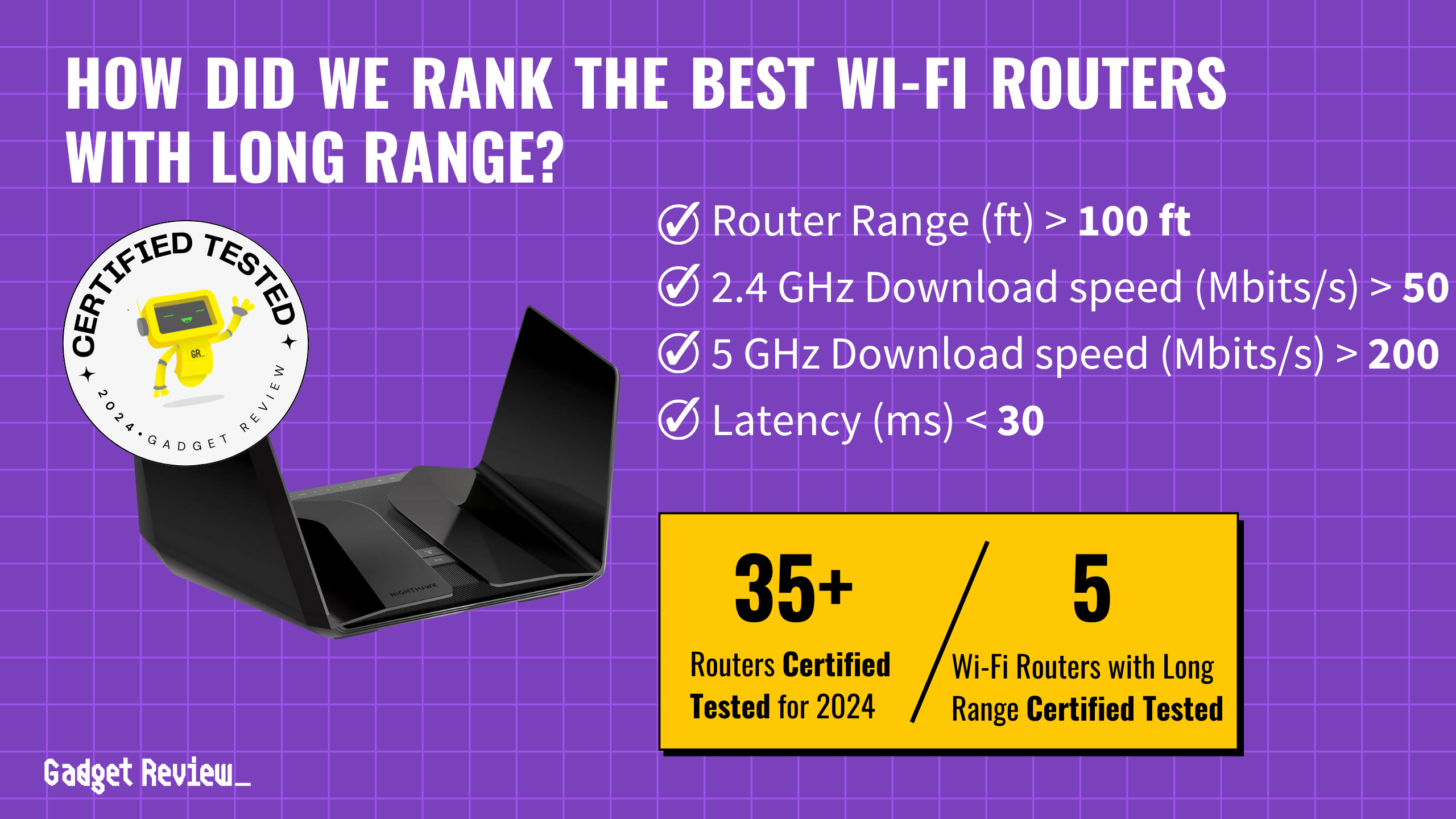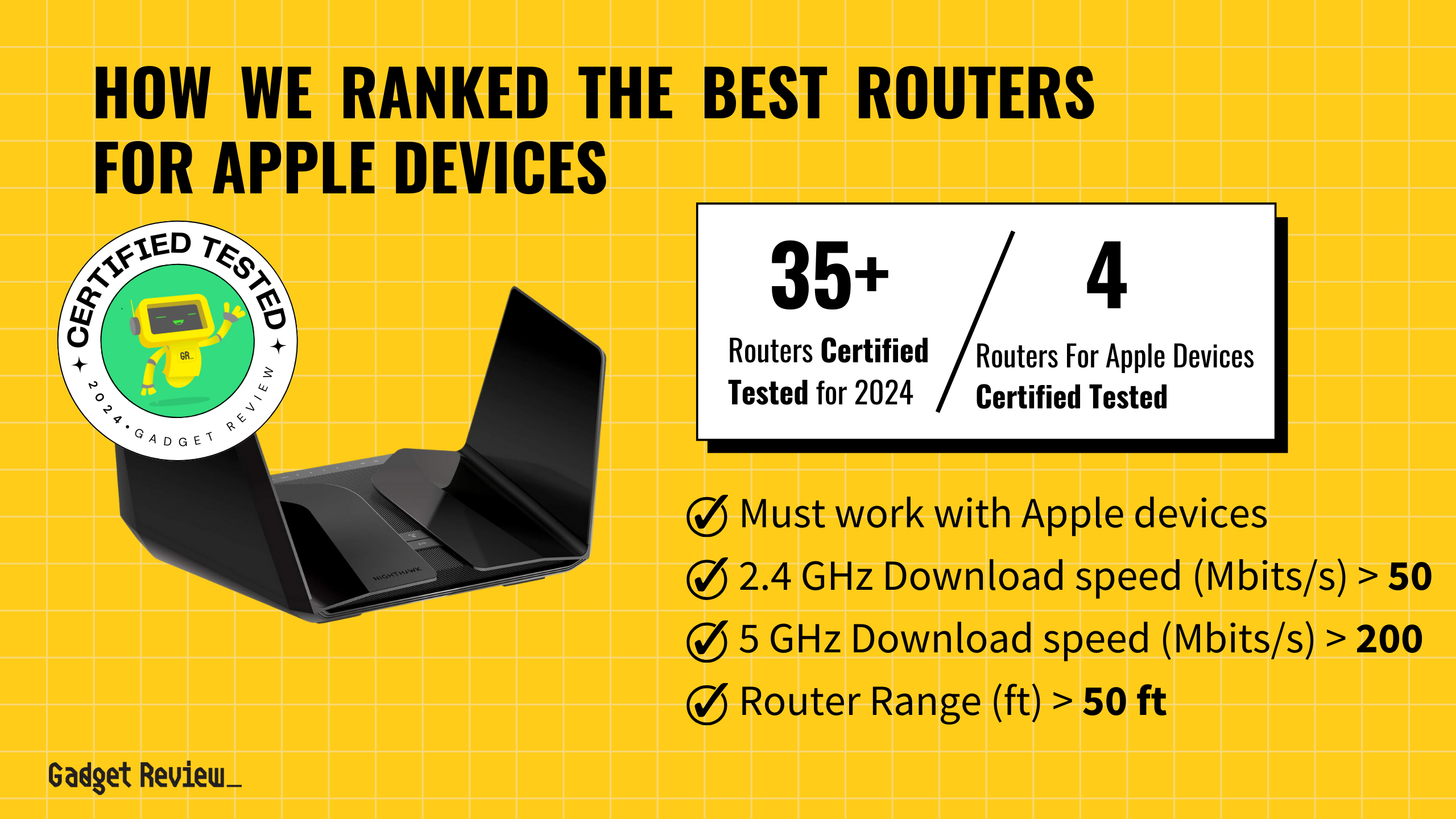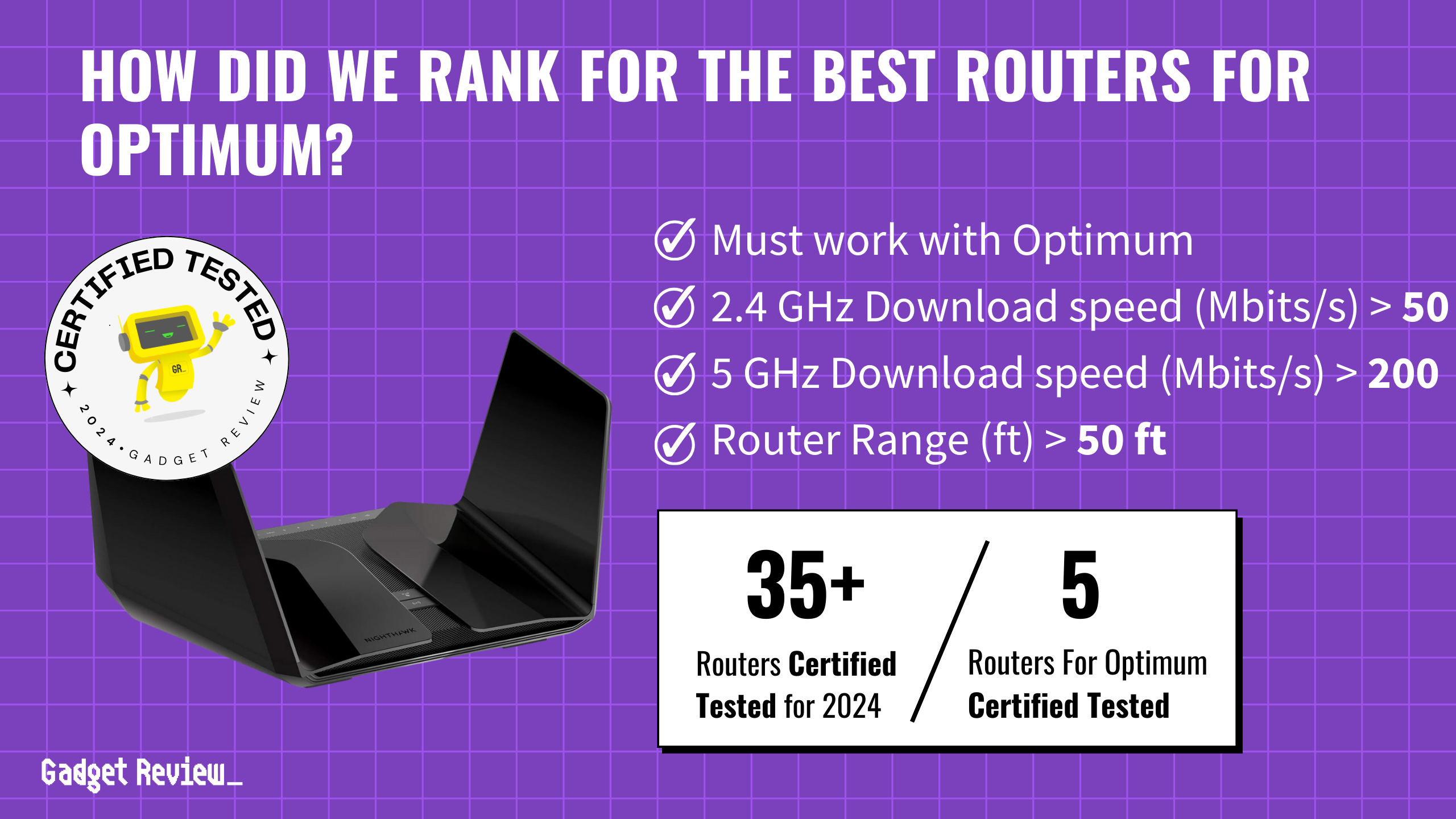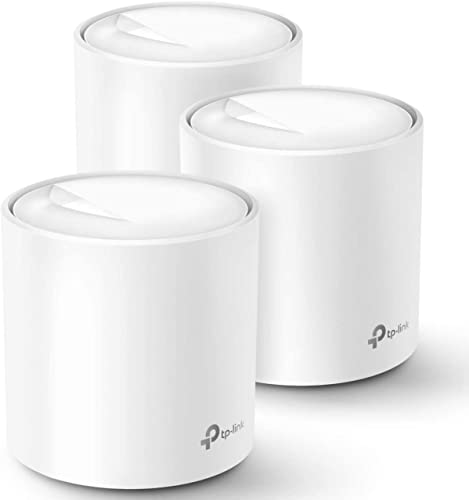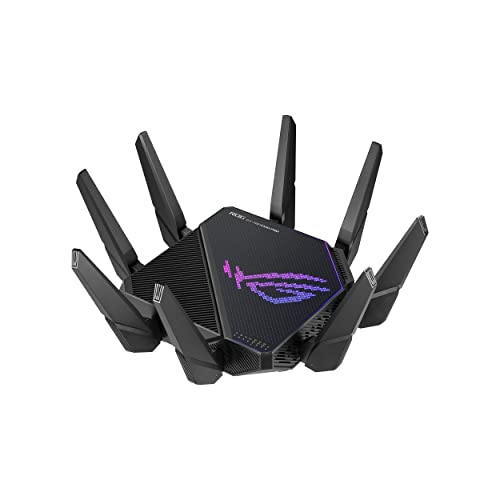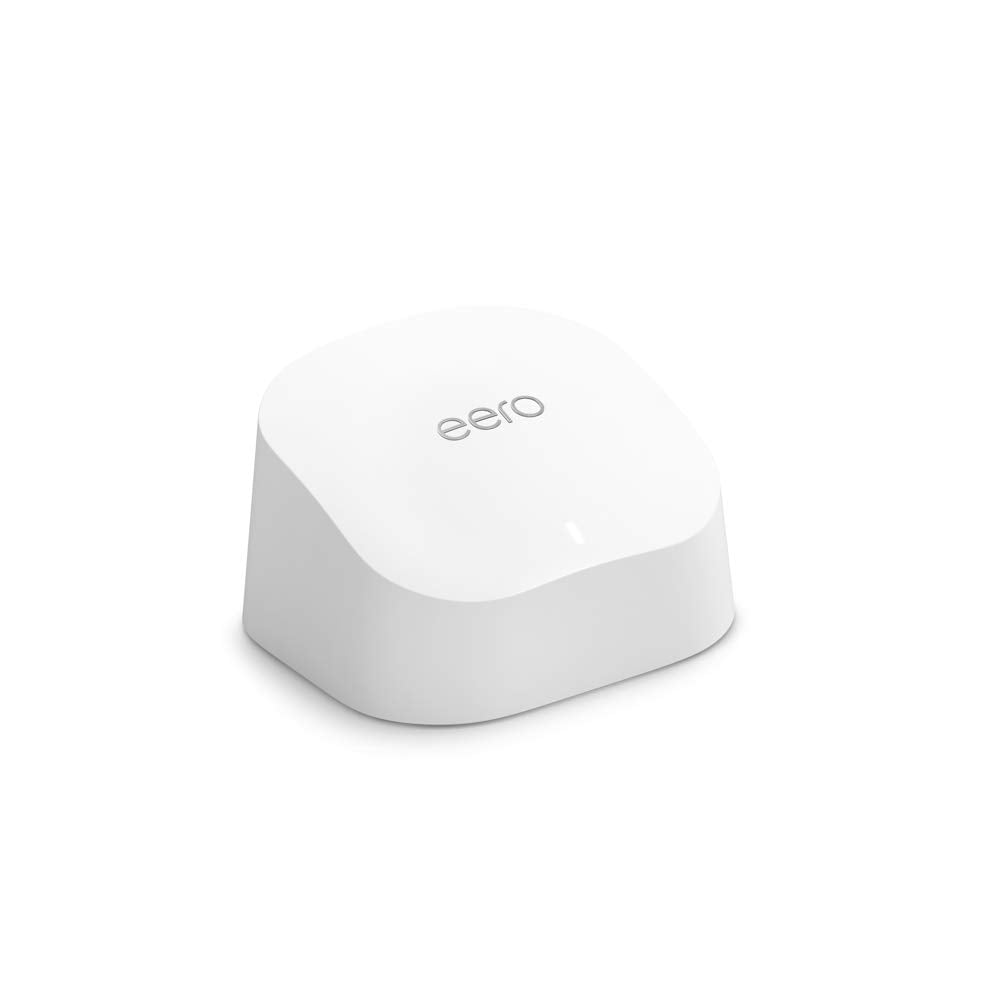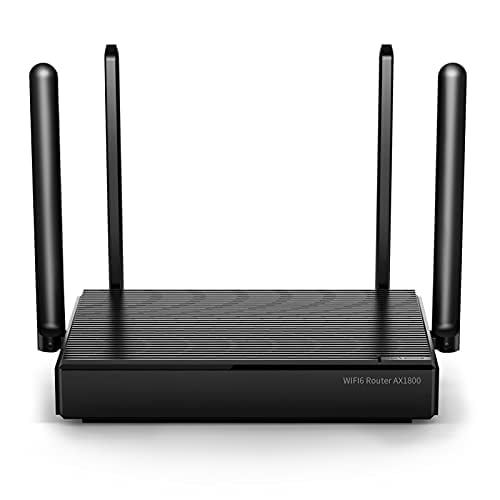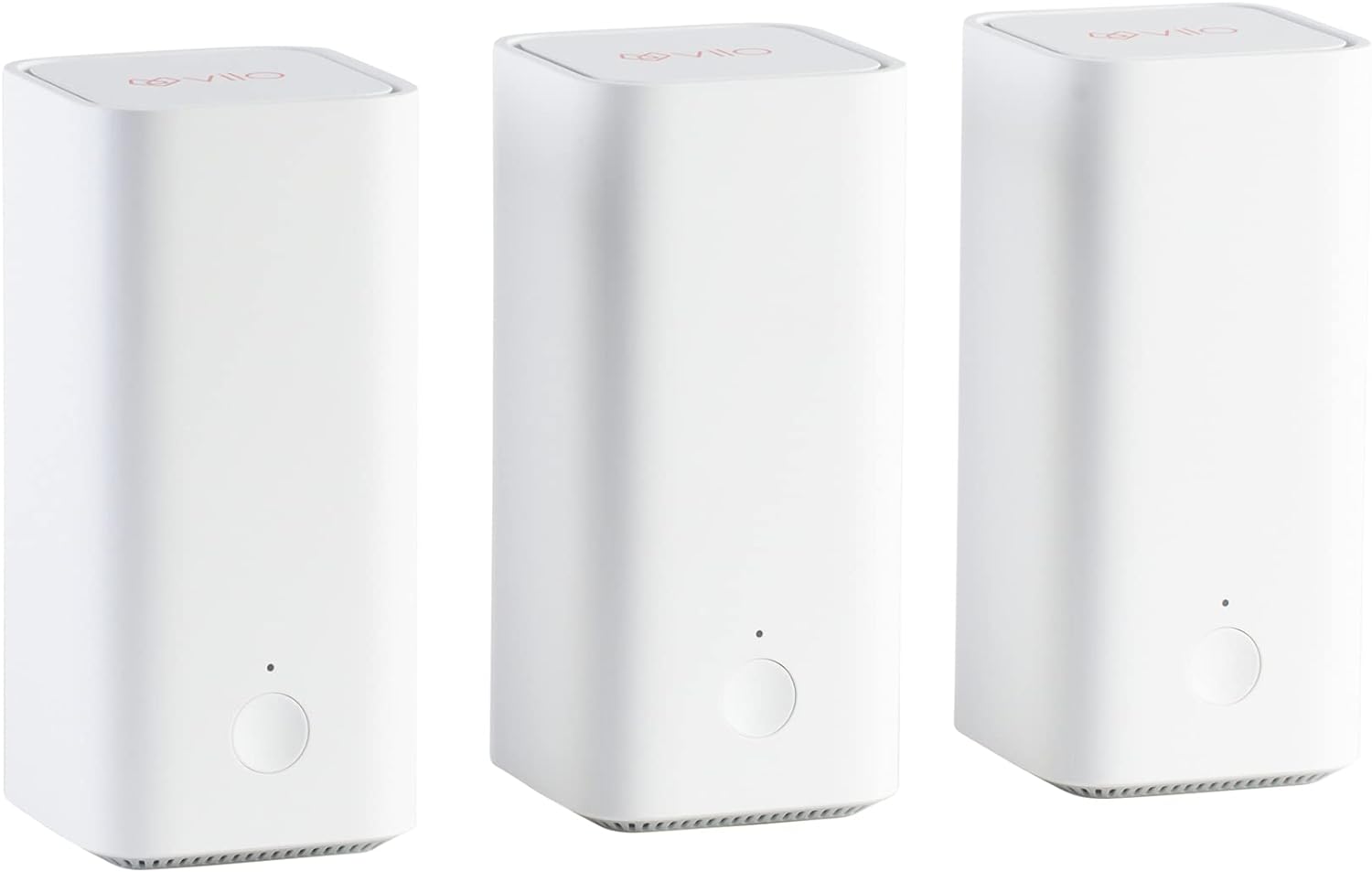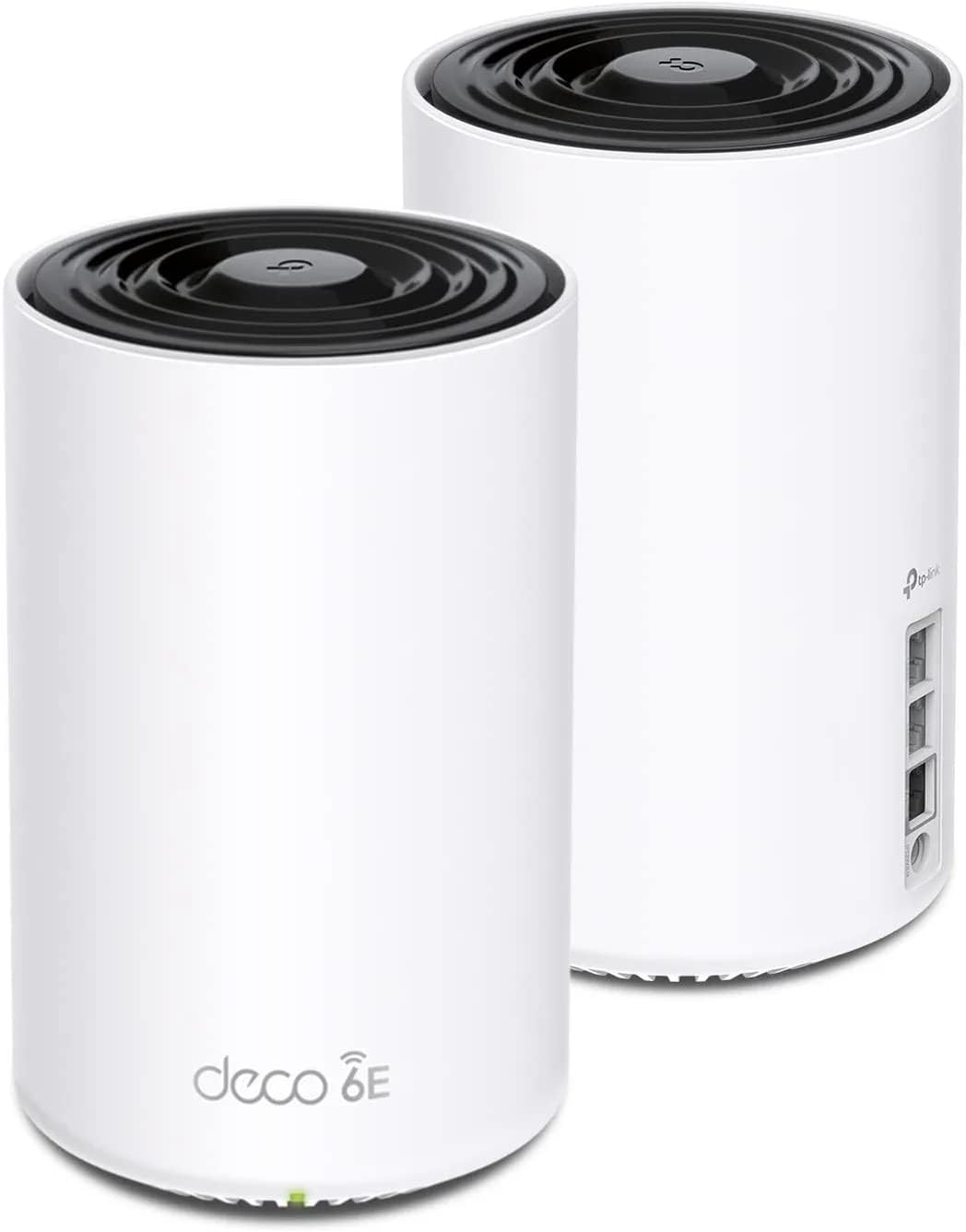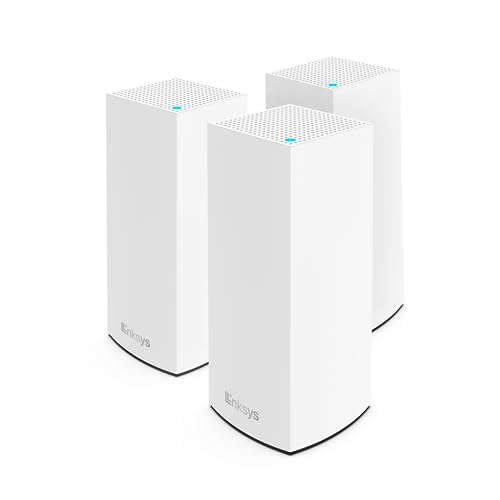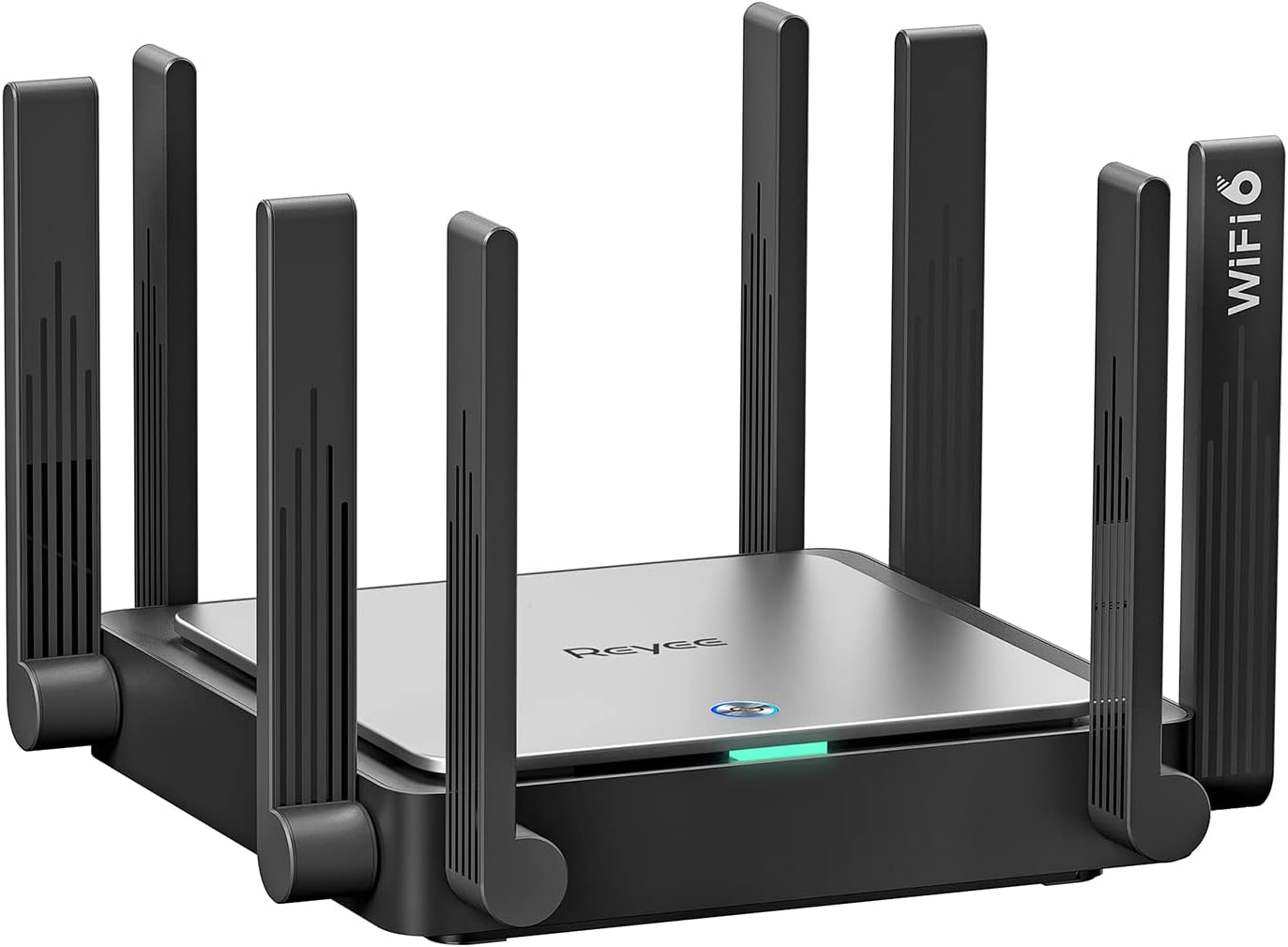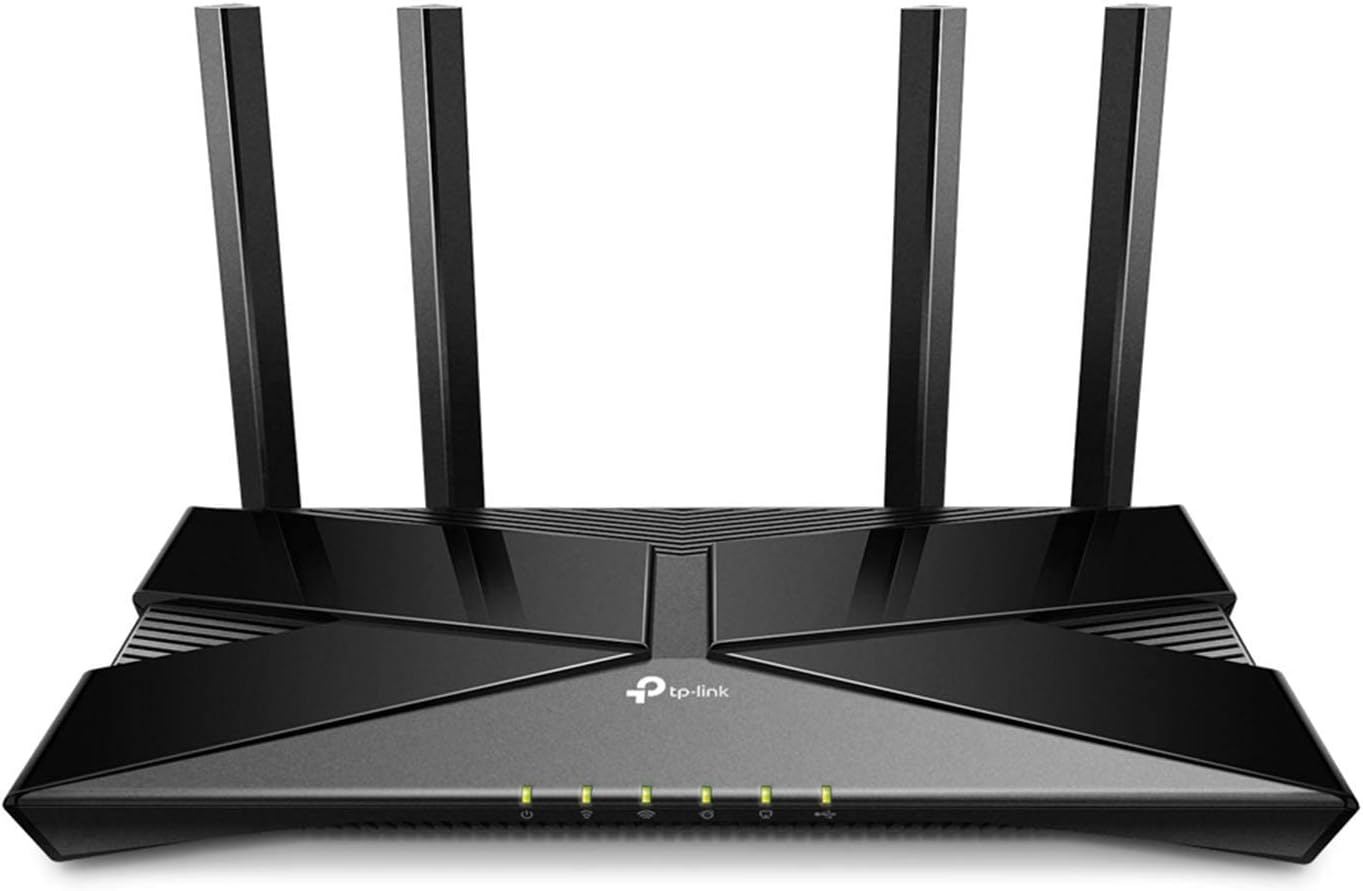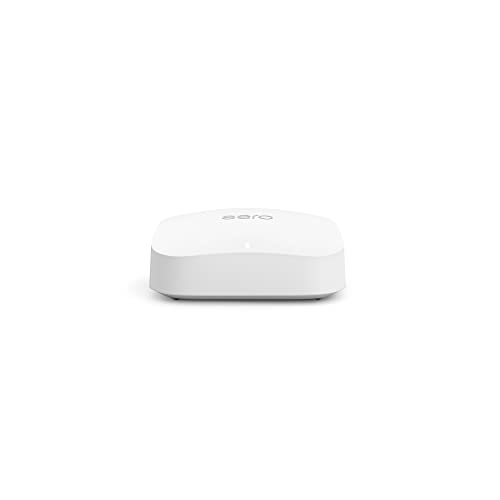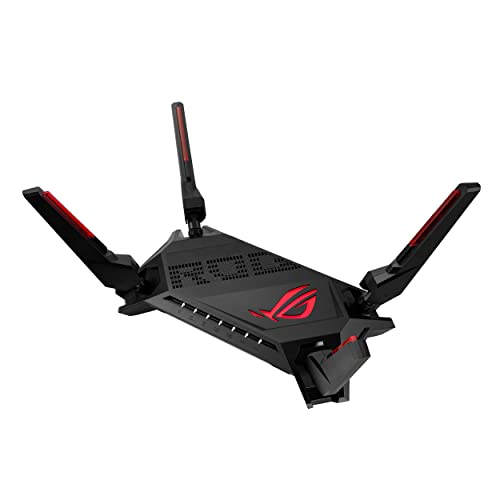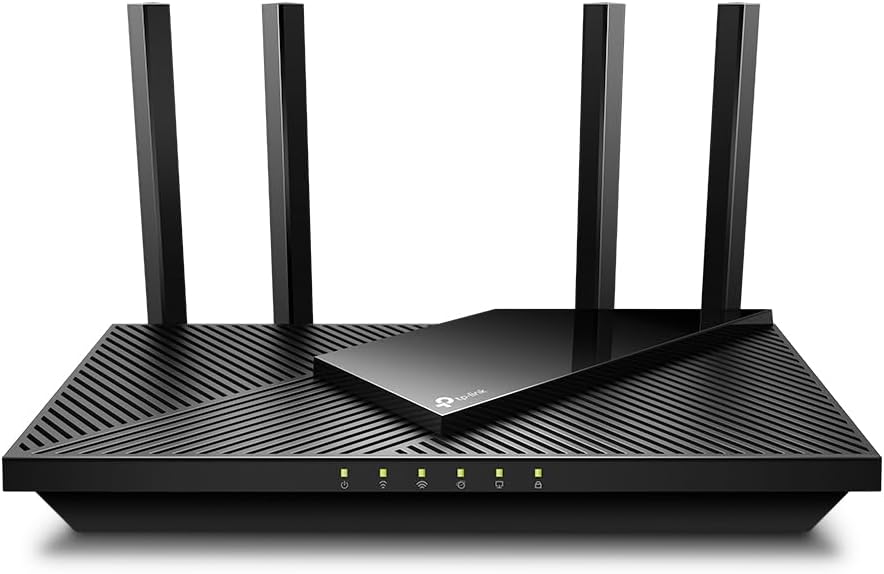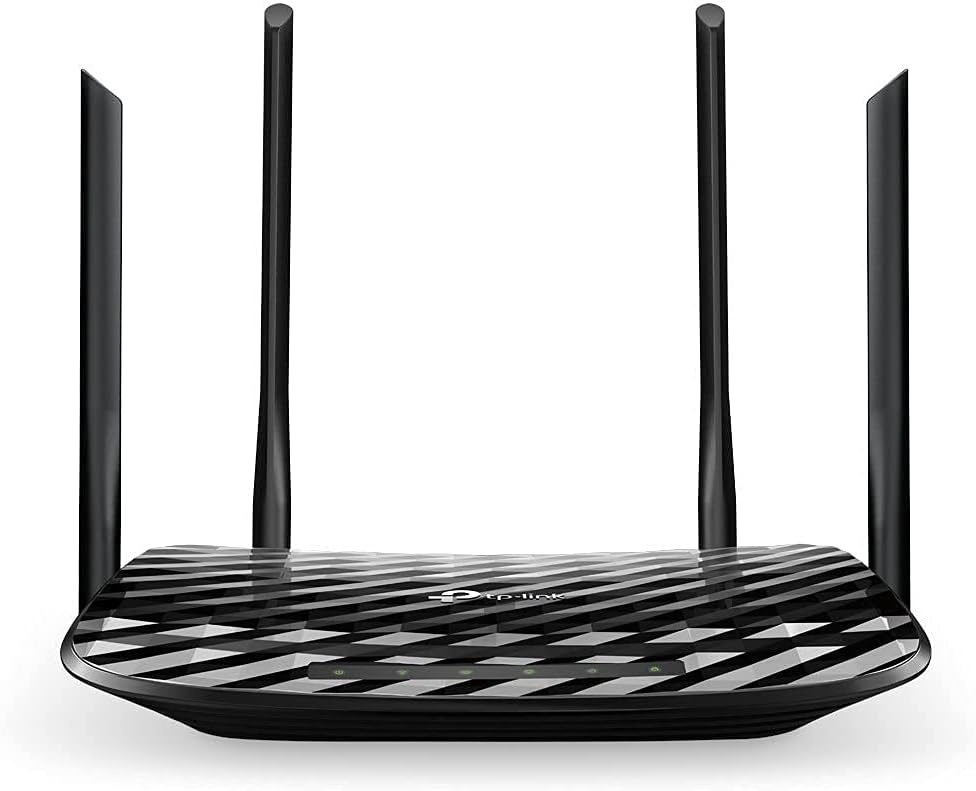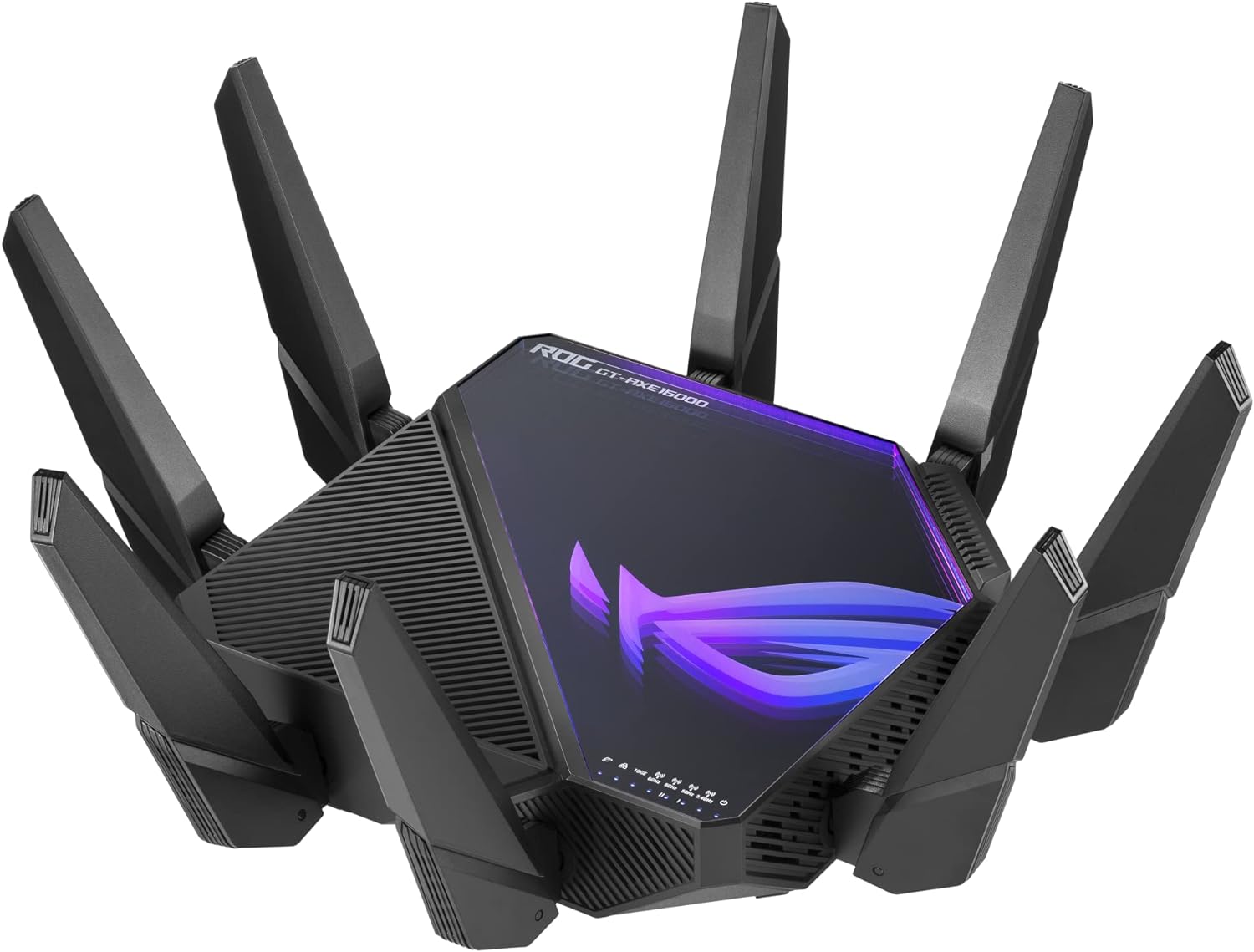Choosing the best secure router is the only way to safeguard your information. it’s crucial to prioritize features that ensure your network’s safety. Top considerations include support for WPA3 security protocols, which offer stronger encryption and protection against brute-force attacks. Our unique approach to identifying the best secure routers involves evaluating 37 models and analyzing 192,864 reviews.
Only five routers earned a spot in our buying guide after this rigorous process. We certify products as tested and use our scientifically proven True Score system to filter out fake and low-quality reviews. This ensures that the winning products are not only secure but also perform well in real-world scenarios, providing you with reliable and verified recommendations for a secure home network. Ultimately, selecting the best router is crucial for both protection and performance.
How Did We Rank the Best Secure Routers?
To rank the best secure routers, we meticulously analyzed testing methods, expert reviews, and customer feedback from more than 200 websites. Our review focused on encryption strength, firewall effectiveness, and update protocols. By understanding these critical features and pain points, we determined 2 required test results, 2 additional beneficial features, and 1 must-have specification. This rigorous approach guarantees our true score accurately represents the top secure routers available.
Our commitment to unbiased reviews is powered by our ‘True Score’ system, targeting low quality and fake reviews. When you shop through our links, you’re backing our mission. Dive deeper to see how.
?️ Minimum Specifications
- Must have data encryption type of more than WPA3.
? Test Criteria
- 2.4 GHz Download Speed: A download speed on the 2.4 GHz band of at least 50 Mbits.
- 5 GHz Download Speed: A download speed on the 5 GHz band of at least 200 Mbits.
? “Nice To Haves”
- Latency: A latency of 30 ms or less.
- Router Range: A range of at least 50 feet before the signal from the router begins to become noticeably weaker.
Latest Updates
- 06/16/2024: Republished the list to include the best secure routers based on our True Score system.
Top Secure Routers For 2024
Prices accurate at the time of publishing

Best Overall

Runner Up

Best Value

Best Budget

Best Mid-Range

Premium Pick
Netgear Nighthawk RAXE300
Best For Secure
Delivers swift speeds and advanced security with WPA3, ensuring a robust, fast, and secure network for streaming, gaming, and more.
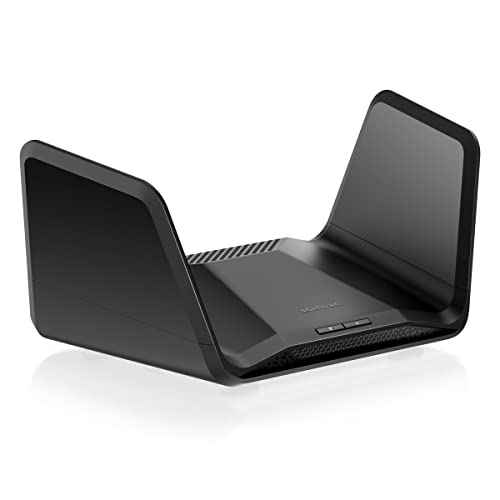
True Score
83829Experts
903kCustomers
Absolutely Fresh
 SAVE $195$399.99$205.00
SAVE $195$399.99$205.00Read More
Snapshot
Reasons to Buy
- Superb Wi-Fi speeds
- Wide range
- Simple setup
Reasons to Avoid
- Limited range (6GHz)
- No USB A port
- Subscription-based security solutions
Specifications

# of LAN Ports 6 
Frequency Bands 2.4 GHz, 5.0 GHz, 6.0 GHz 
MU-MIMO Support Yes 
Wireless Standard AC, AX, N 
Mesh System No 
Quality of Service Prioritization No 
# of Phone Ports 1 
# of WAN Ports 1 
App Compatible Yes 
Available Storage 256MB 
Band Technology Tri 
Data Encryption Type WPA-PSK, WPA2-PSK, WPA3 
Energy Star Certified No 
Integrated Modem No 
LAN Ports 4 Gb Ethernet 
Number of Antennas 6 
Parental Controls Yes 
Processor Cores Quad 
Processor Speed 1.7GHz 
WiFi Range 2500 sq.ft 
WiFi Speed 7.8 Gb 
Wired Speed 1000 Mb All Specs
Test Results
2.4 GHz Download speed (Mbits/s) 222 5 GHz Download speed (Mbits/s) 852 6 Ghz Download speed (Mbits/s) 757 Latency (ms) 5 Router Range (ft) 170 2.4 GHz Upload speed (Mbits/s) 0 5 GHz Upload speed (Mbits/s) 175 6 Ghz Upload speed (Mbits/s) 247 All Tests
All Retailers
- $205.00$400Save $195
- $299.99
- $299.99
- $379.97$399Save $19
Our Verdict
The Netgear Nighthawk RAXE300 router is a strong performer, especially in the realm of speed and security, catering to the needs of users who demand both in their networking devices. It showcases impressive speeds in the 5 GHz band, with download and upload rates of 851.6 Mbits/s and 175 Mbits/s, respectively, making it suitable for high-definition streaming and online gaming. The 6 GHz band further enhances its capability, providing download and upload speeds of 756.8 Mbits/s and 247.2 Mbits/s, ensuring the router is ready for future Wi-Fi demands.
Security is a standout feature of the Nighthawk RAXE300, with support for WPA3 encryption offering a significant advancement in network security. This protocol provides robust protection against external threats, making it harder for unauthorized users to breach the network. This level of security is critical for protecting sensitive information in home and small business environments.
Additionally, the router offers a range of 170 feet and boasts an exceptionally low latency of 5 ms, enhancing its appeal for large homes or spaces needing consistent coverage without sacrificing speed or responsiveness.
Overall, the Netgear Nighthawk RAXE300 balances high-speed performance with advanced security features. Its support for WPA3 and its speed and coverage capabilities make it a reliable choice for users looking to maintain a secure, fast, and responsive network environment.
Read Less

Best Overall

Runner Up

Best Value

Best Budget

Best Mid-Range

Premium Pick
Asus RT-AX86S
Best For Gaming
The Asus RT-AX86S balances cost and performance; excellent for streaming and gaming with high download speeds, though limited upload speeds may affect content creators.
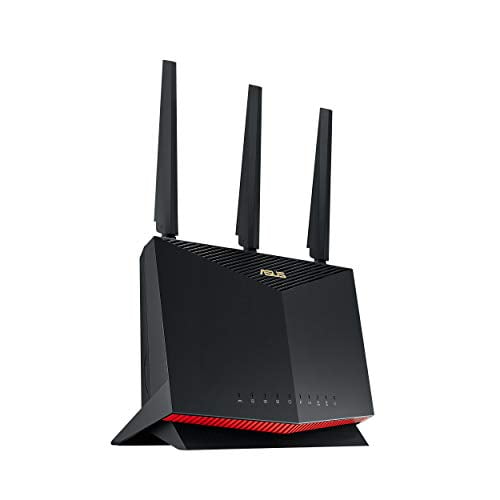
True Score
83823Experts
891kCustomers
Absolutely Fresh
 SAVE $147$249.99$102.68
SAVE $147$249.99$102.68Read More
Snapshot
Reasons to Buy
- Fast WiFi and download speeds
- Incredible range of coverage
- Easy installation and set up
- Low Latency
Reasons to Avoid
- Lacks Backhaul and Mesh Networking
Specifications

# of LAN Ports 4 
Frequency Bands 2.4 GHz, 5.0 GHz 
MU-MIMO Support Yes 
Wireless Standard AC, AX, N 
Mesh System No 
Quality of Service Prioritization Yes 
# of Phone Ports n/a 
# of WAN Ports 1 
App Compatible Yes 
Available Storage 256MB 
Band Technology Dual 
Data Encryption Type WPA, WPA-Enterprise, WPA2, WPA2-Enterprise, WPA3, WPA3-Enterprise, WPS 
Energy Star Certified No 
Integrated Modem No 
LAN Ports 4 Gb Ethernet 
Number of Antennas 4 
Parental Controls Yes 
Processor Cores Dual 
Processor Speed 1.8GHz 
WiFi Range 5400 sq. ft 
WiFi Speed 5.7 Gb 
Wired Speed – All Specs
Test Results
2.4 GHz Download speed (Mbits/s) 89 5 GHz Download speed (Mbits/s) 563 6 Ghz Download speed (Mbits/s) 0 Latency (ms) 15 Router Range (ft) 140 2.4 GHz Upload speed (Mbits/s) 0 5 GHz Upload speed (Mbits/s) 23 6 Ghz Upload speed (Mbits/s) 0 All Tests
All Retailers
- $102.68$250Save $147
- $490.00
Our Verdict
If you need a secure router on a very tight budget, the Asus RT-AX86S offers a surprising level of performance. Its 5GHz download speed of 563 Mbps/s is perfect for gaming and 4K video streaming, ensuring smooth and uninterrupted experiences. However, the router’s upload speed leaves a lot to be desired—coming at just 23 Mbps/s, which severely limits your ability to stream on platforms like Twitch.
The router’s range extends to 140 ft, offering broad coverage that benefits large homes and small business environments where consistent connectivity across a wider area is necessary. Plus, the 15 ms latency helps keep games smooth and lag-free and reduces desync in video conference calls.
On the security front, the Asus RT-AX86S incorporates advanced protocols to protect user data and maintain network integrity. These include the latest WPA3 encryption to help protect your network against breaches caused by brute-force attacks, safeguard your privacy, and harden your overall network.
Despite this excellent speed, range, and security combination, the RT-AX86S isn’t expensive. It’s an excellent budget router that’s perfect for any tasks that need plenty of downstream bandwidth for streaming, playing games, downloading large files, or watching 4K videos – just remember that it’s not ideal for doing some streaming of your own because of the low upstream speed.
Read Less
Did you know 64% of router reviewers are untrustworthy?
Our research found only 46 of 127 router reviewers as of July 2024 can be trusted. This is why Gadget Review is committed to calculating the most accurate product scores on the web.
To do this, we give every router review site a Trust Rating, which measures how trustworthy the site and their testing claims are. We then leverage AI & a machine learning model to combine and calculate the Trust Rating with data from experts and consumers to deliver the True Score, the web’s most accurate product quality rating.
 192,864
192,864Router Reviews Analyzed

37
Total Products Analyzed

Best Overall

Runner Up

Best Value

Best Budget

Best Mid-Range

Premium Pick
Asus ROG GT6 Mesh
Best For Mesh
A mesh system with excellent speed, extensive coverage, and WPA3 security, perfect for large homes needing seamless connectivity and high security.

True Score
82836Experts
874kCustomers
Absolutely Fresh
 SAVE $80$479.99$399.99
SAVE $80$479.99$399.99Read More
Snapshot
Reasons to Buy
- Fast Download/Upload Speed
- Easy to install and operate
Reasons to Avoid
- WiFi speed drops off at long range
- Connection range is limited
- Limited USB Connectivity
- Mediocre Latency
Specifications

# of LAN Ports 3 
Frequency Bands 2.4 GHz, 5.0 GHz 
MU-MIMO Support Yes 
Wireless Standard AC, AX, N 
Mesh System Yes 
Quality of Service Prioritization Yes 
# of Phone Ports n/a 
# of WAN Ports 1 
App Compatible Yes 
Available Storage 256MB 
Band Technology Tri 
Data Encryption Type WEP, WPA-Enterprise, WPA-PSK, WPA2-Enterprise, WPA3-Personal 
Energy Star Certified No 
Integrated Modem No 
LAN Ports 3 Gb Ethernet 
Number of Antennas 9 
Parental Controls Yes 
Processor Cores Triple 
Processor Speed 1.7GHz 
WiFi Range 5800 sq. ft 
WiFi Speed 2.6 Gb 
Wired Speed 2500 Mb All Specs
Test Results
2.4 GHz Download speed (Mbits/s) 139 5 GHz Download speed (Mbits/s) 701 6 Ghz Download speed (Mbits/s) 0 Latency (ms) 22 Router Range (ft) 95 2.4 GHz Upload speed (Mbits/s) 112 5 GHz Upload speed (Mbits/s) 619 6 Ghz Upload speed (Mbits/s) 0 All Tests
All Retailers
- $399.99$480Save $80
- $403.99$480Save $76
Our Verdict
If you’re looking for a mesh system that offers robust security, the Asus ROG GT6 Mesh system expertly combines expansive coverage, fast connectivity, and state-of-the-art security to meet your needs. With download and upload speeds reaching 139.35 Mbits/s and 111.9 Mbits/s on the 2.4 GHz band and an impressive 701.3 Mbits/s and 618.5 Mbits/s on the 5 GHz band, it ensures that all your online activities, from HD streaming to competitive gaming, are supported without interruption.
The system’s coverage extends up to 95 feet, providing a strong and reliable signal across various-sized rooms and homes. This wide range is complemented by a 22 ms latency, facilitating a responsive and smooth online experience for real-time applications, games, and video conferencing.
The use of WPA3 encryption, the latest in Wi-Fi security, enhances network protection, making it much more difficult for attackers to crack passwords using offline guessing attacks. Moreover, it introduces stronger encryption for data, safeguarding personal and sensitive information transmitted over the network. This level of security is particularly beneficial in environments where confidential information is transmitted frequently, providing peace of mind to users about the safety of their online interactions.
With two “towers” included in the box, the expensive price tag attached to the Asus ROG GT6 Mesh system is actually a great value. With a fully functional mesh network available out of the box, it’s an easy way to get wide coverage in your home alongside high-speed internet. Plus, its security features ensure that your network remains secure against evolving cyber threats.
Read Less

DON’T SEE WHAT YOU’RE LOOKING FOR?
When selecting a strong small business router, look for robust security features and reliable performance to ensure smooth operations. For those constantly on the move, leading travel routers offer portability and secure connections wherever you go. If security is a top priority, consider the strongest VPN routers, which provide enhanced protection for your data.
In our buying guide, we also highlight the best VoIP routers for clear and uninterrupted voice communication. For in-depth reviews, check out our Synology RT2600AC review, known for its powerful performance and extensive features, and our Wyze Wi-Fi 6E mesh review, which covers its seamless coverage and advanced capabilities.

Best Overall

Runner Up

Best Value

Best Budget

Best Mid-Range

Premium Pick
Eero Max 7
Best For Wired
This router offers premium speed and coverage, with WPA3 for top-notch security. It is ideal for those expanding their network with additional “towers.”
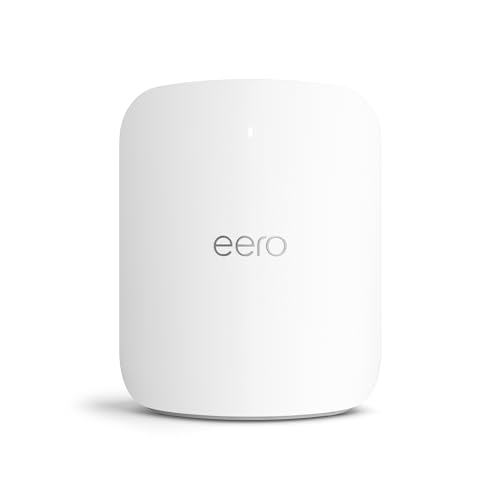
True Score
81807Experts
87195Customers
Absolutely Fresh
 $599.99
$599.99Read More
Snapshot
Reasons to Buy
- Exceptional Download WiFi Speed
- Easy Installation and Configuration
- Low Latency
Reasons to Avoid
- Poor 2.4 GHz Upload Speeds
- Short Range of Coverage
- Limited Port Space
Specifications

# of LAN Ports 4 
Frequency Bands 2.4 GHz, 5.0 GHz, 6.0 GHz 
MU-MIMO Support Yes 
Wireless Standard BE 
Mesh System Yes 
Quality of Service Prioritization No 
# of Phone Ports n/a 
# of WAN Ports 1 
App Compatible Yes 
Available Storage 4000MB 
Band Technology Tri 
Data Encryption Type WPA2-Personal, WPA3-Personal 
Energy Star Certified No 
Integrated Modem No 
LAN Ports 2 Gb Ethernet 
Number of Antennas 10 
Parental Controls Yes 
Processor Cores Quad 
Processor Speed – 
WiFi Range 2500 sq.ft 
WiFi Speed 4.3 Gb 
Wired Speed 10000 Mb All Specs
Test Results
2.4 GHz Download speed (Mbits/s) 96 5 GHz Download speed (Mbits/s) 1,078 6 Ghz Download speed (Mbits/s) 1,223 Latency (ms) 7 Router Range (ft) 90 2.4 GHz Upload speed (Mbits/s) 75 5 GHz Upload speed (Mbits/s) 411 6 Ghz Upload speed (Mbits/s) 638 All Tests
All Retailers
- $599.99
- $599.99
- $599.99
Our Verdict
If you’re after a premium, high-security, and easily expanded router, the Eero Max 7 mesh system is a comprehensive solution that can be built out as much as you need by buying more “towers.” It’s capable of delivering a 2.4 GHz download speed of 95.90 Mbits/s, complemented by a staggering 1078.5 Mbits/s on the 5 GHz band for downloads, ensuring that high-bandwidth activities such as 4K streaming and competitive online gaming are seamlessly supported. The system’s upload speed reaches 410.6 Mbits/s on the 5GHz band, further affirming its ability to handle intensive upload tasks like high-definition video conferencing and large file uploads without noticeable delay.
The Eero Max 7 boasts a significant coverage area with a range of 90 feet, making it an ideal choice for ensuring consistent and reliable Wi-Fi across large homes or office spaces. Coupled with a remarkably low latency of 7 ms, it guarantees a smooth and responsive internet experience, enhancing the quality of real-time applications such as gaming and video calls.
Security on the Max 7 is also excellent, thanks to its WPA3 encryption, which fortifies the network against potential cyber threats. Offering stronger protections against password brute-force attacks, this advanced encryption standard is crucial for protecting sensitive information and maintaining the integrity of the user’s digital environment.
It’s extremely expensive to set up a full system, but the Eero Max 7 mesh system excels in delivering top-tier performance across speed, coverage, and security. With its advanced WPA3 encryption, impressive speeds for both download and upload across multiple bands, and extensive range, it’s an outstanding choice for users seeking a high-performing and secure networking solution for their home or office.
Read Less
Category Snapshot
Routers
- Total Brands/Products Tested
12 Brands, 37 Products
- Top 2 Brands
Netgear, Asus
- Price Range (Budget-Premium)
$45-$600
- Average True Score
79.42
- Important Test Criteria
Download & Upload Speed (bits/second)
Range (feet/meters)
- Most Trusted Testers

- Top Router Experts
- Typical Warranty
1 year
- Covered by Insurance
Yes – AKKO

Best Overall

Runner Up

Best Value

Best Budget

Best Mid-Range

Premium Pick
TP-Link Archer AXE75
Best For Parental Controls
An affordable choice that doesn’t skimp on speed, coverage, or security, making it perfect for medium-sized homes on a budget.
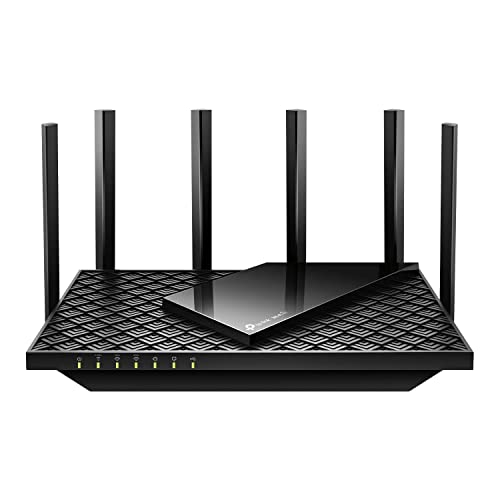
True Score
79794Experts
862kCustomers
Mixed Reviews
 $178.99
$178.99Read More
Snapshot
Reasons to Buy
- Good WiFi speeds
- Adequate range
- Simple set up
Reasons to Avoid
- Average download speeds
- Limited coverage
- Subscription-based security solutions
Specifications

# of LAN Ports 4 
Frequency Bands 2.4 GHz, 5.0 GHz, 6.0 GHz 
MU-MIMO Support Yes 
Wireless Standard AC, AX 
Mesh System Yes 
Quality of Service Prioritization Yes 
# of Phone Ports n/a 
# of WAN Ports 1 
App Compatible Yes 
Available Storage n/a 
Band Technology Tri 
Data Encryption Type WPA3 
Energy Star Certified n/a 
Integrated Modem No 
LAN Ports Gigabit Ethernet 
Number of Antennas 6 
Parental Controls Yes 
Processor Cores Triple 
Processor Speed 1.7GHz 
WiFi Range 2500 sq.ft 
WiFi Speed 2.4GHz 
Wired Speed 1000 Mb All Specs
Test Results
2.4 GHz Download speed (Mbits/s) 65 5 GHz Download speed (Mbits/s) 309 6 Ghz Download speed (Mbits/s) 318 Latency (ms) 9 Router Range (ft) 60 2.4 GHz Upload speed (Mbits/s) 0 5 GHz Upload speed (Mbits/s) 0 6 Ghz Upload speed (Mbits/s) 0 All Tests
All Retailers
- $178.99
- $179.99$200Save $20
- $179.99$200Save $20
Our Verdict
If you’re on a budget but still want the latest security, the TP-Link Archer AXE75 router offers an affordable mix of speed, coverage, and security. With solid download performance in the 2.4 GHz band of 65.05 Mbits/s and good 5 GHz band performance 309.1 Mbits/s down, the router is excellent for handling most basic web browsing and streaming, HD and SD without breaking a sweat.
The router’s coverage range is 60 feet, making it well-suited for medium-sized homes and ensuring consistent signal strength and connectivity without the need for additional extenders. The AXE75 also features a latency of 9 ms, perfect for video conferences if you work from home and for gaming. Including WPA3 encryption also significantly enhances your network’s defense against external threats, offering stronger protections against brute-force attacks and improving the privacy of your data.
With its budget pricing, the AXE75 is a fantastic intersection of performance, range, and security. It provides your home with everything it needs to start enjoying smooth web browsing and buffer-free streaming, all with the peace of mind of a robust security system. If you live in a small or medium-sized home or apartment, the price, speed, and range are hard to argue with.
Read Less
Which Criteria Matters for Testing Best Secure Routers?
By focusing on these criteria (2 required, 2 nice to have), anyone can quickly and easily compare these routers and how they’ll perform. This helps you make an informed decision and purchase a routers that will meet your needs.
| CRITERIA | RANGE | REQUIRED | DEFINITION |
|---|---|---|---|
| 2.4 GHz Download Speed | > 50 Mbits/s | Yes | The maximum speed that the router can reach when downloading on the 2.4 GHz band. |
| 5 GHz Download Speed | > 200 Mbits/s | Yes | The maximum speed that the router can reach when downloading on the 5 GHz band. |
| Router Range | > 50 ft | No (Nice to have) | How far a device can be from a router before the signal starts degrading. It is worth noting that 2.4 GHz reaches further than 5 GHz. |
| Latency | < 30 ms | No (Nice to have) | The delay that is created by a signal being sent by the router and then received. |
Our Trusted Data Sources
We looked at 120+ router reviewers and found that 46 are trustworthy (60%+ Trust Rating). The three we have listed below are our most trusted for routers.
- James Morris – Kit Guru, LinkedIn
- Matt Spencer – TechGearLab, LinkedIn
- Brian Nadel – Tom’s Guide, MuckRack
Interested in a comprehensive analysis of our data sources? We’ve got you covered. Below, you’ll find a detailed list of every router review website we’ve identified, organized by their respective Trust Ratings from highest to lowest. But we didn’t stop there. We’ve meticulously reviewed each publication and verified the data by checking whether the authors have bio links to MuckRack or LinkedIn. We’re committed to not only checking the facts but ensuring their veracity.
Router Test Data & Results
Disclaimer:
Evaluating router performance is more than hardware analysis. While hardware tests are straightforward, the challenge lies in contextualizing the results within the limits of real-world usage. Routers operate under conditions that testers cannot fully standardize, including variations in Internet Service Providers (ISPs), network traffic congestion, discrepancies between advertised and actual internet speeds, and the physical layout of homes. These factors introduce a degree of unpredictability, making it hard to draw universal conclusions. As such, our router recommendations aim to provide useful general guidance, accommodating a wide range of home environments and internet setups.
1. 2.4 GHz Download Speed (Mbits/s)
The oldest and slowest of the bands on a router is the 2.4 GHz band, but it sticks around for a reason. Generally speaking, while this band features the slowest available speeds and has the lowest bandwidth, but also reaches out the furthest. It’s not the best band to connect to connect if you need high speeds, but if you just need to be connected for light browsing or anything that’s low bandwidth, it works. Alternatively, if you own a lot of old devices, this band may be the only band they can “see” and therefore, use.
Given the age of the band, top speeds on 2.4 GHz cap out very quickly. We recommend a speed of at least 50 Mbits/s, but if you aren’t really going to be using this band for anything other than checking web pages, you can go lower. It’s worth noting, though, that this might lead to a more frustrating and laggier time on modern sites with lots of scripting and high-quality images.
2.4 GHz Download Speed
> 50 Mbits/s
Acceptable range of performance
Definition: The top speed the router reaches downloading on the 2.4 GHz band.
Units of Measurement: Mbits/s (megabits per second)
Tools to Measure: Speed-checking software
Why It’s Important:
For older devices or for connecting at a longer range, the 2.4 GHz frequency is the only one that you’ll be able to use, so it should have usable speed.
2.4 GHz Download Speed (Mbits/s; higher is better; 0 = No Data)
2. 5 GHz Download Speed (Mbits/s)
5 GHz Download Speed
> 200 Mbits/s
Acceptable range of performance
Definition: The top speed the router reaches downloading on the 5 GHz band.
Units of Measurement: Mbits/s (megabits per second)
Tools to Measure: Speed-checking software
Why It’s Important:
This band is used by most modern devices and offers greater speeds that enable activities like gaming and HD streaming on multiple devices.
The much faster 5 GHz band offers up much greater bandwidth and is much, much better at meeting high-speed demands. Streaming high-quality video, using streaming services, gaming, downloading large files and games – the 5 GHz band is what makes all of these activities quick and bearable. It reaches a lower range than the 2.4 GHz band, but it’s also much faster, so you’ll use it more, especially on newer devices that actually support the band.
Given how much you’ll be using this band, we recommend a speed of at least 200 Mbits/s to ensure you’re able to enjoy streaming and gaming on at least a few devices simultaneously. Any lower and you start to run into real bottleneck concerns, such as endless buffering, lagging, or drops in connection.
5 GHz Download Speed (Mbits/s; higher is better; 0 = No Data)
3. Router Range (ft)
Router range is exactly what the name suggests: how far can you get from the router before you start experiencing issues with your connection? The complicating factor is the simple fact that range depends on the band you’re using. 2.4 GHz is a band that offers greater range, so it gives tests results that show a greater range than tests that use the 5 GHz band. In general, our research found most publications used the 5 GHz band, so our recommendations are based on that.
As such, we recommend your router have a range of at least 50 ft. This gives you a good “bubble” around the router that you can connect to, but it’s important to know that things like the walls in your home can cause issues. Thicker walls block more signal, thinner walls block less. Some materials will also do a better job than others will at stopping signal, so if you see a router with a range of 65 ft, know that it might not reach that far in your home. It could reach further – or not nearly as far. This is also why you get dead zones in your home – it’s a matter of geometry and materials.
Router Range
> 50 ft
Acceptable range of performance
Definition: The distance the router transmits reliable signal out to before performance and speed degrades.
Units of Measurement: Feet (ft)
Tools to Measure: Measuring Tape
Why It’s Important:
Range impacts how far you’ll get a reliable connection in your home, and whether you’ll need extenders or not.
Router Range (ft; higher is better; 0 = No Data)
4. Latency (ms)
Latency
< 30 ms
Acceptable range of performance
Definition: The time it takes for the router to send and then receive signals.
Units of Measurement: Milliseconds (ms)
Tools to Measure: Speed-checking software
Why It’s Important:
Latency is important to reduce delay when gaming and video conferencing.
On a router, latency refers to how long it takes for the router to send out and receive a signal. The longer it takes, the more delay there is between you sending and receiving data, which can introduce lag in video games and also makes video conferencing harder since the person you’re speaking with now has to contend with your delay and vice versa. If you’ve ever spent a call talking over someone because you don’t know they started talking a second ago, that’s latency.
For that reason, we recommend a latency below 40 ms. As low as you can get it is obviously preferable, but latency is another aspect of your internet connection that is hard to manage. Latency differs to every single place you connect to, and every ISP has its own latency they “add” because you have to connect to their service too. Latency creeps in from your ISP, from the site you’re requesting data from, from your router, and from your own onboard Wi-Fi antenna – and that’s just to name a few sources. If you’re gaming, you also have a delay introduced by your connection to game servers and the delay that exists on a hardware level when you input commands.
Latency (ms; lower is better; 0 = No Data)
Best Secure Routers: Mistakes To Avoid
- Ignoring Firmware Updates: Firmware updates contain security patches and bug fixes that help protect your router from vulnerabilities and exploits. Ignoring firmware updates or choosing a router with limited update support can leave your network susceptible to cyber attacks. Look for routers with regular firmware updates and automatic update features.
- Choosing Weak Encryption: Encryption is crucial for securing your network traffic and preventing unauthorized access to your data. Avoid routers that only support outdated encryption protocols like WEP (Wired Equivalent Privacy) and opt for routers that offer modern encryption standards like WPA3 (Wi-Fi Protected Access 3) for enhanced security.
- Using Default Settings: Default settings on routers are often insecure and easily exploitable by hackers. Change default usernames, passwords, and network names (SSIDs) to unique and strong ones to prevent unauthorized access to your router and network. Additionally, disable remote management features unless absolutely necessary.
- Neglecting Guest Network Security: If your router supports guest networks, ensure they are properly secured to prevent guests from accessing your main network and compromising its security. Use strong passwords and enable features like guest isolation to restrict communication between devices on the guest network.
The Best Secure Routers Tests Compared
Product |
True Score
|
2.4 GHz D/L Speed
|
5 Ghz D/L Speed
|
6 GHz D/L Speed
|
Range
|
Latency
| |
|---|---|---|---|---|---|---|---|
| 83 |
|
|
|
|
| $205.00 $400 $195 |
| 83 |
|
|
|
|
| $102.68 $250 $147 |
| 82 |
|
|
|
|
| $399.99 $480 $80 |
| 81 |
|
|
|
|
| $599.99 |
| 79 |
|
|
|
|
| $178.99 |


